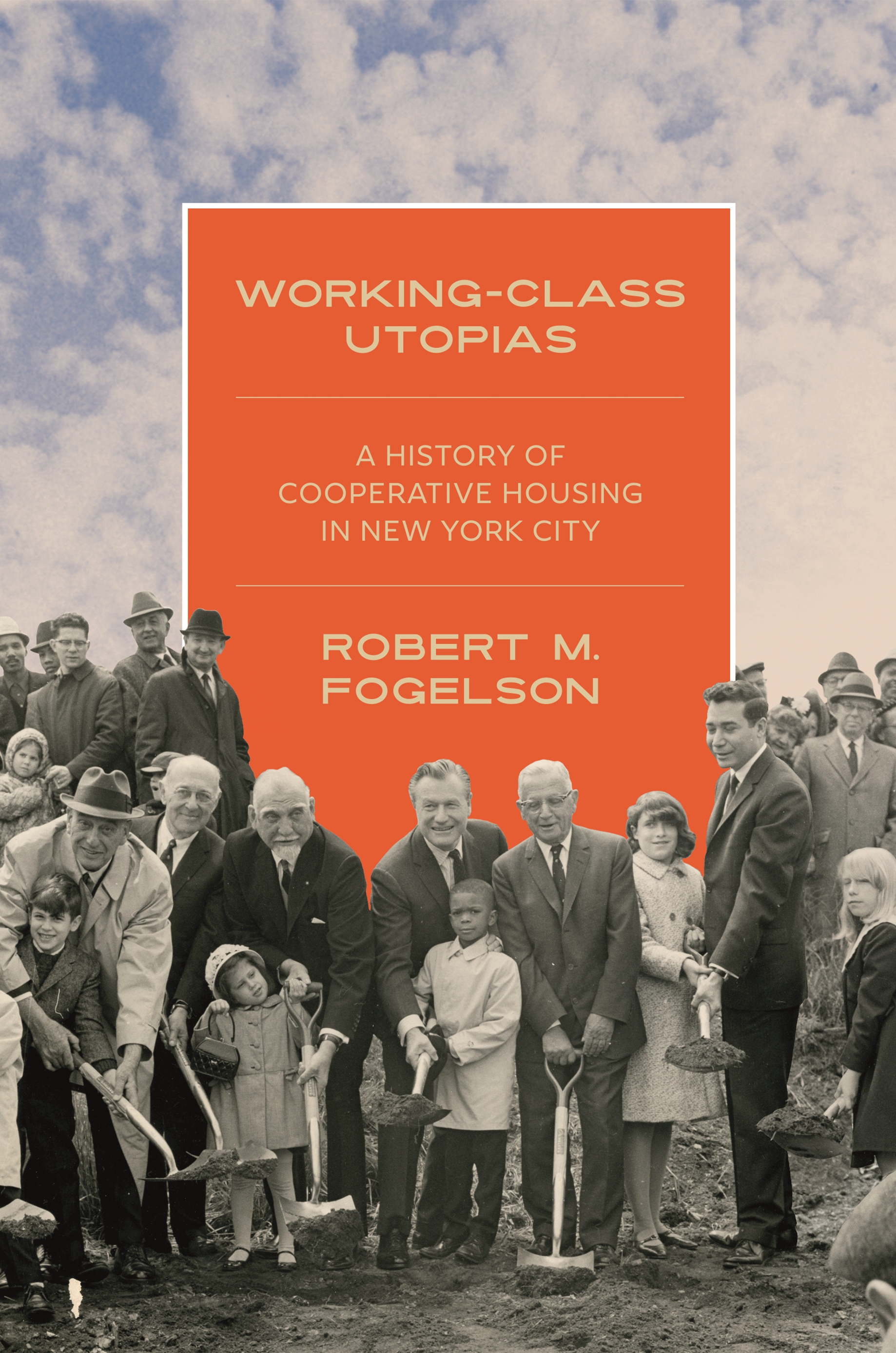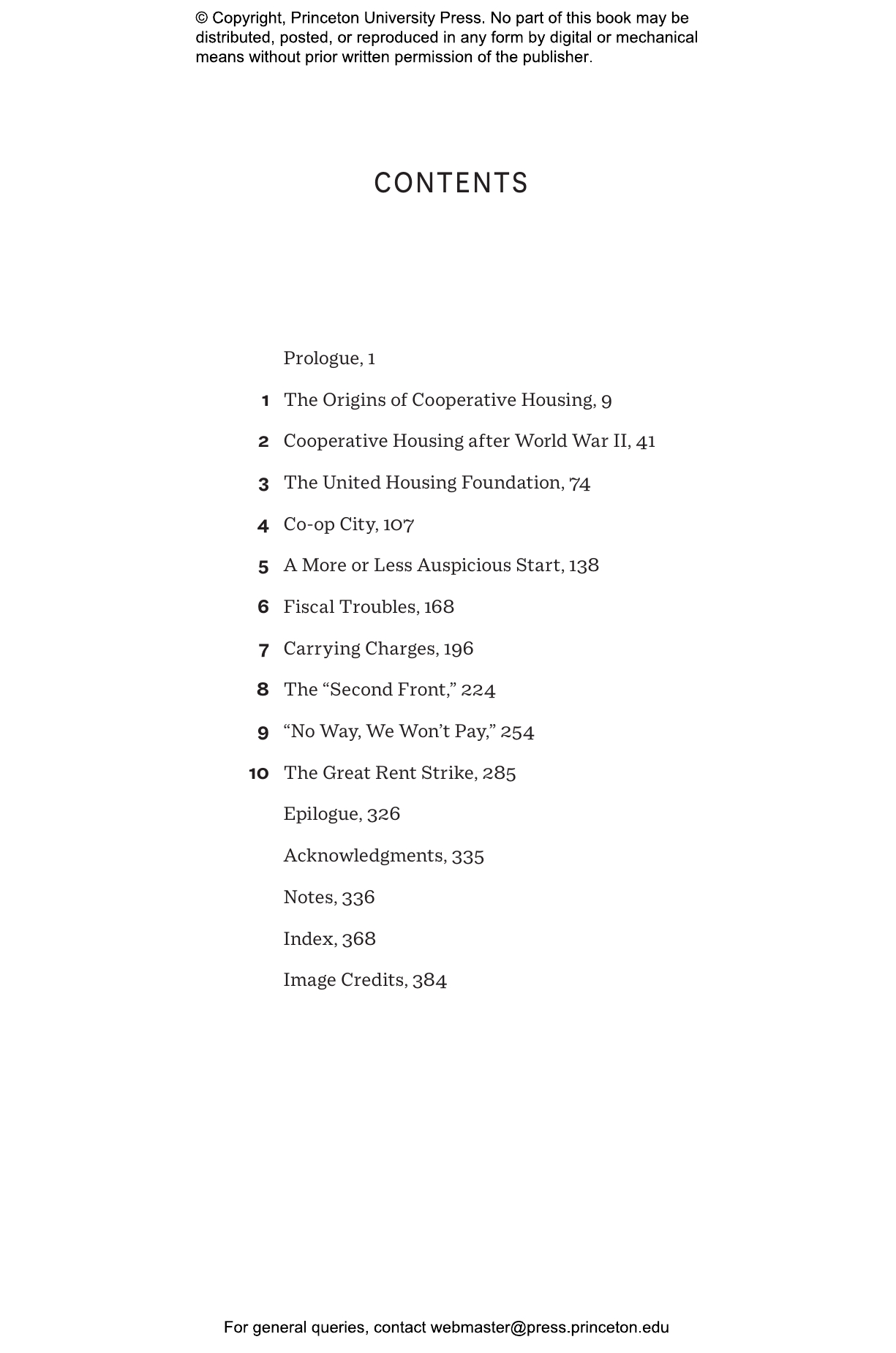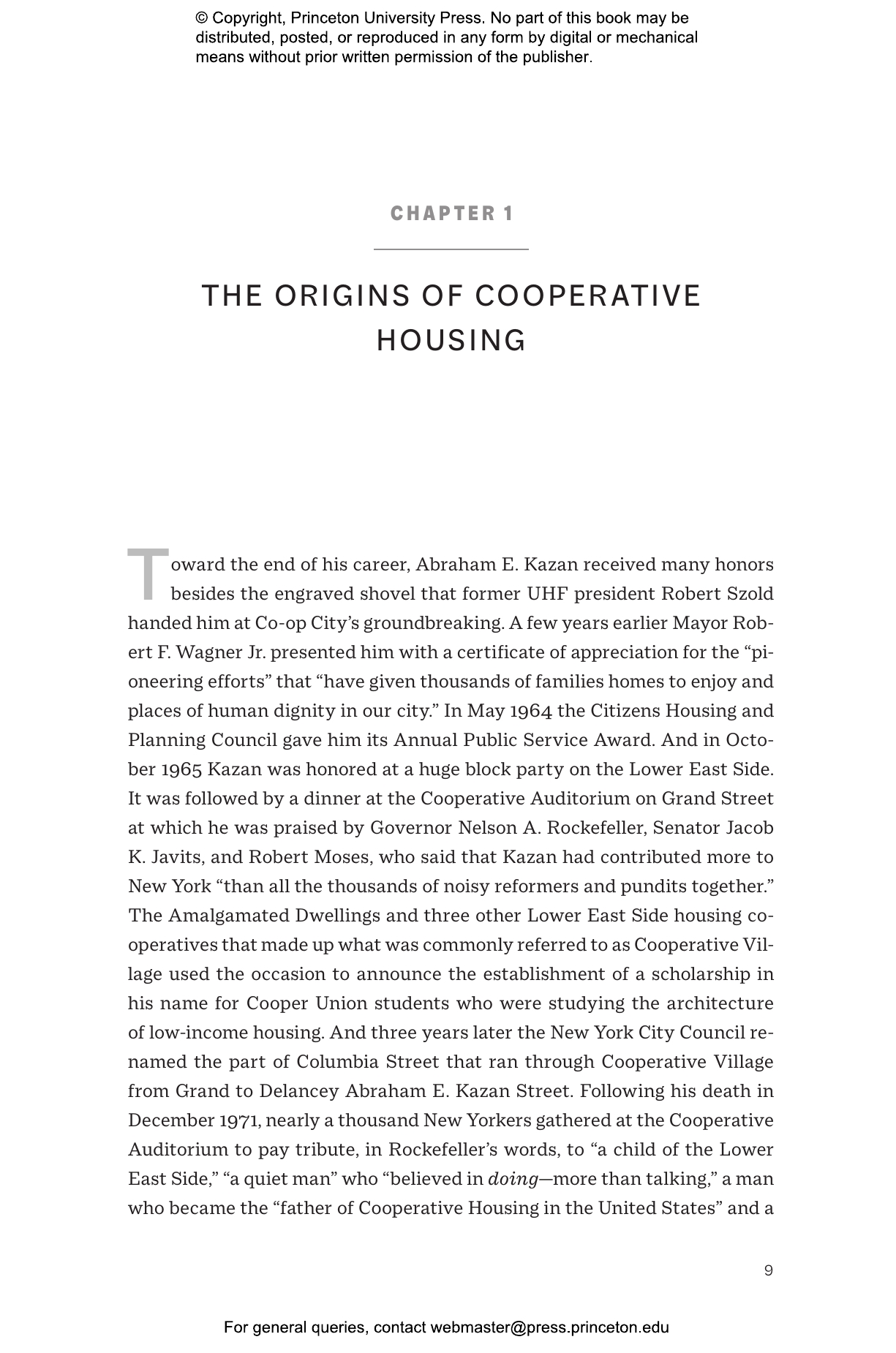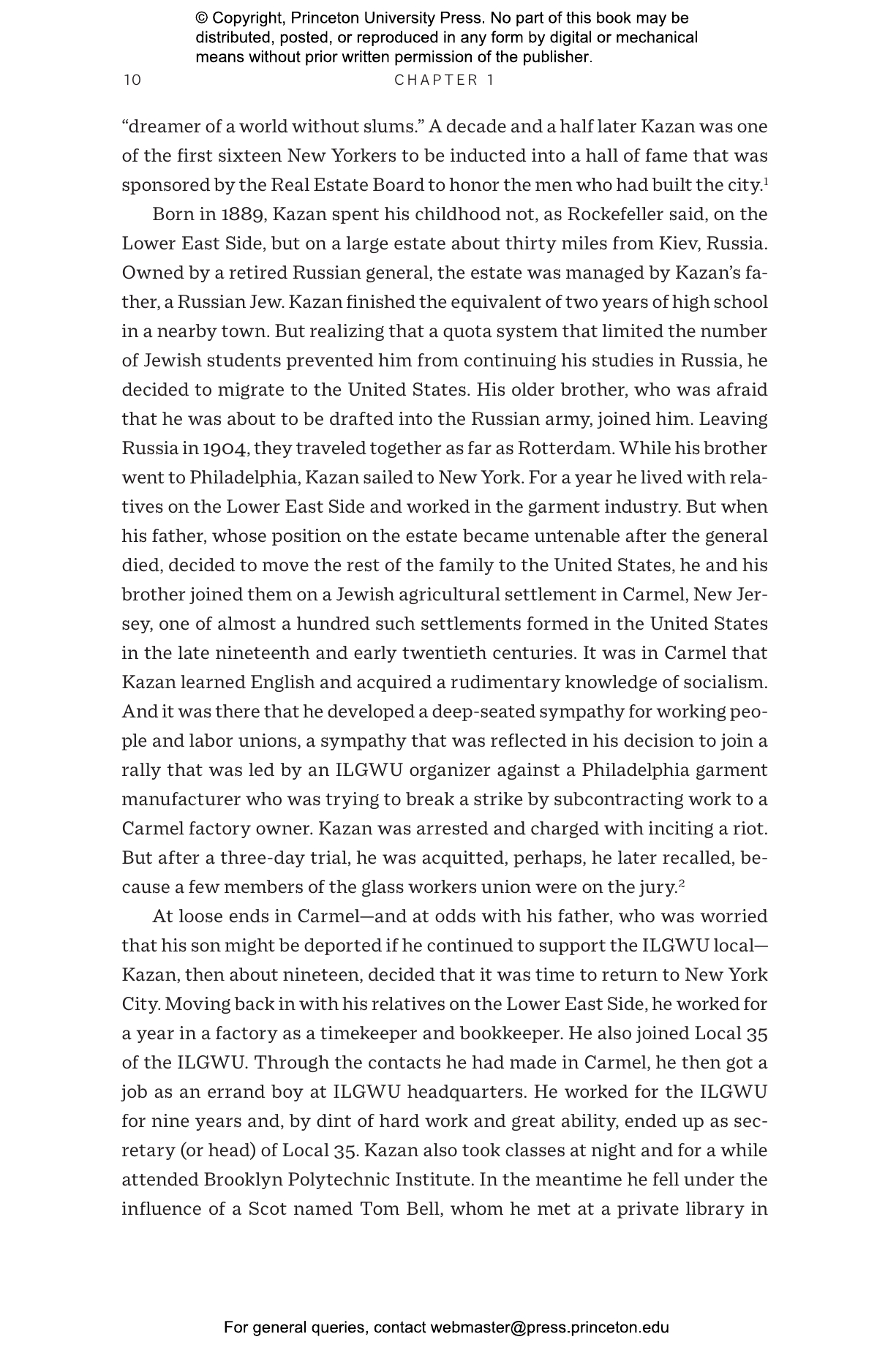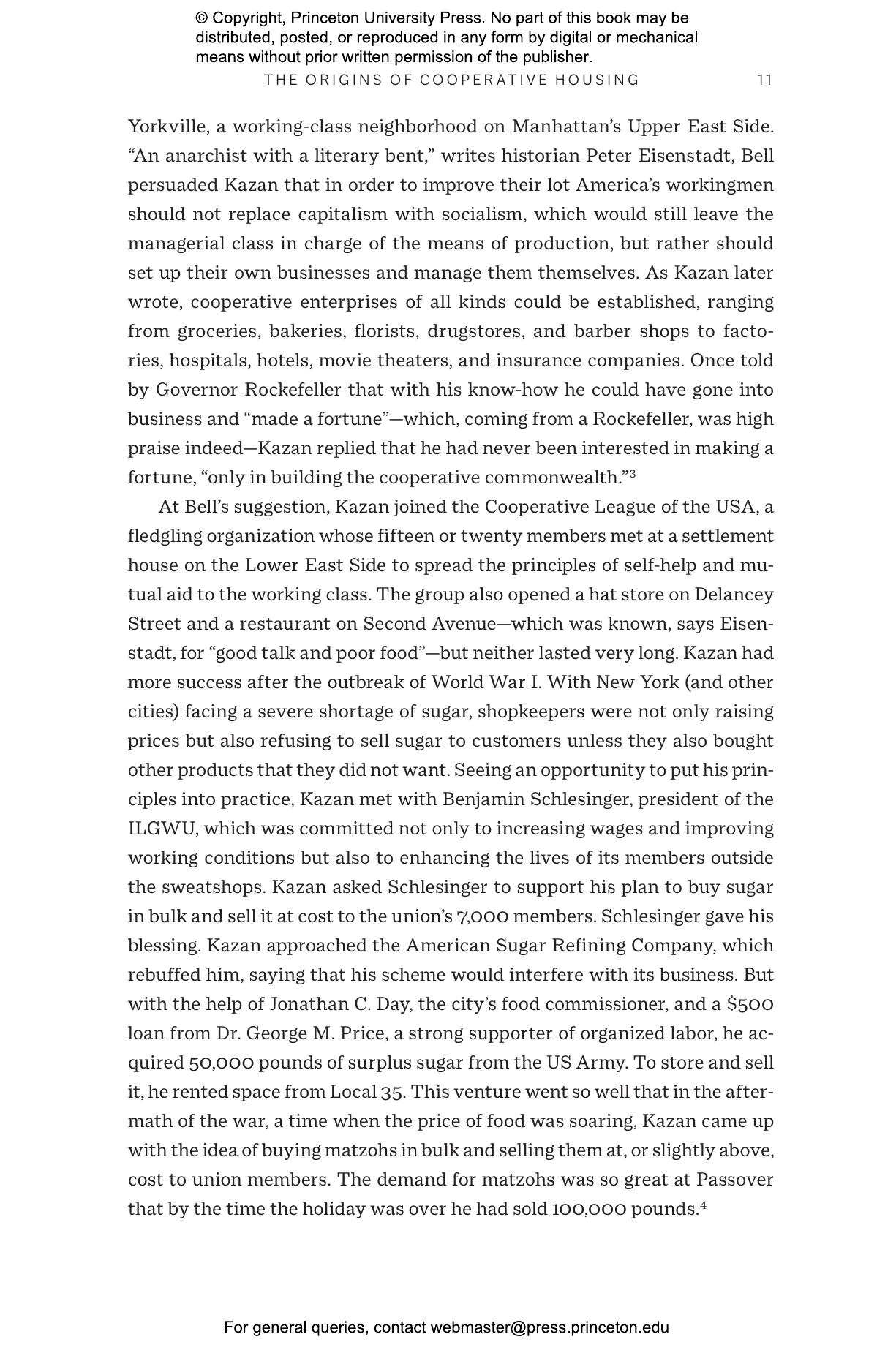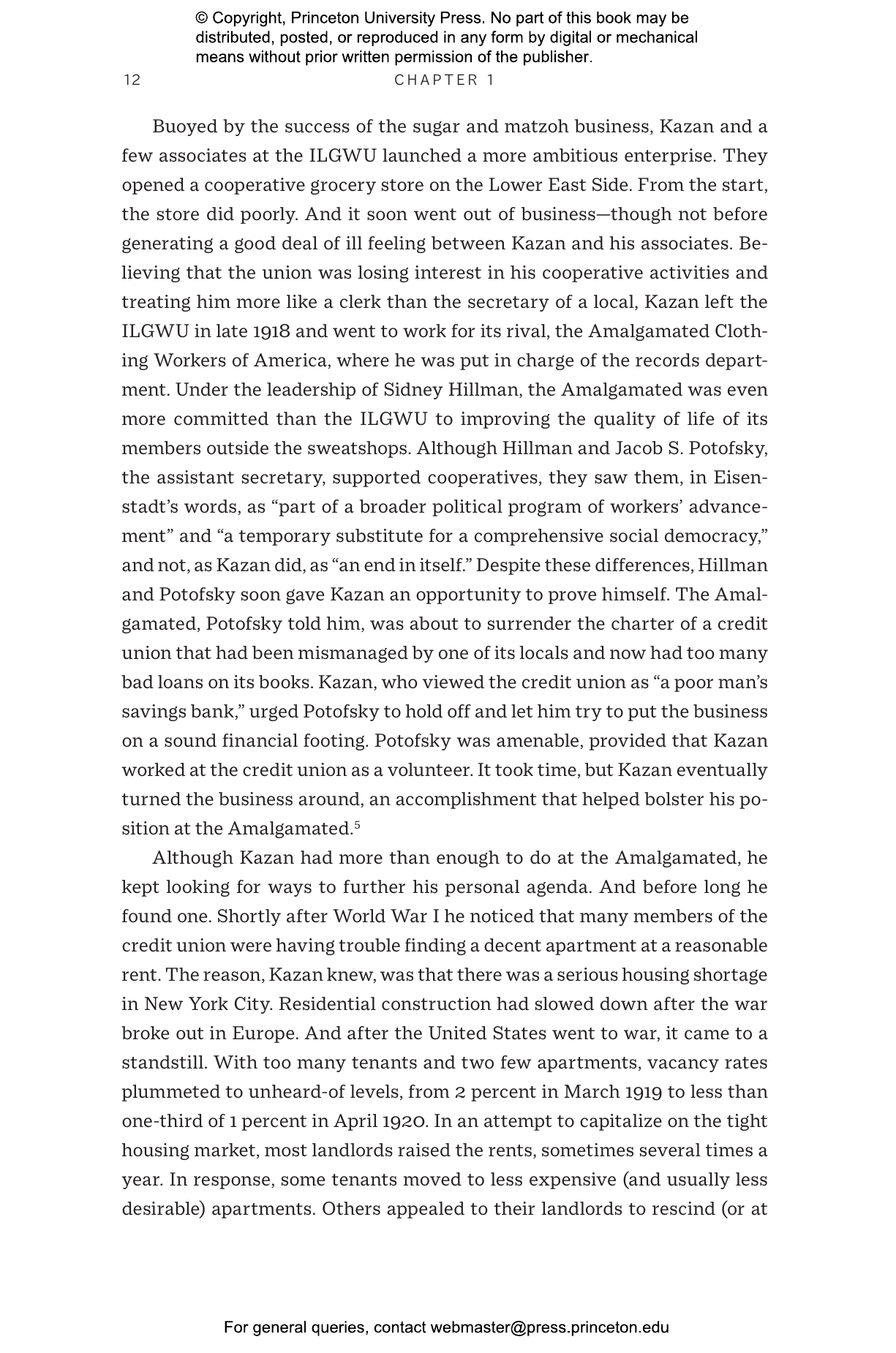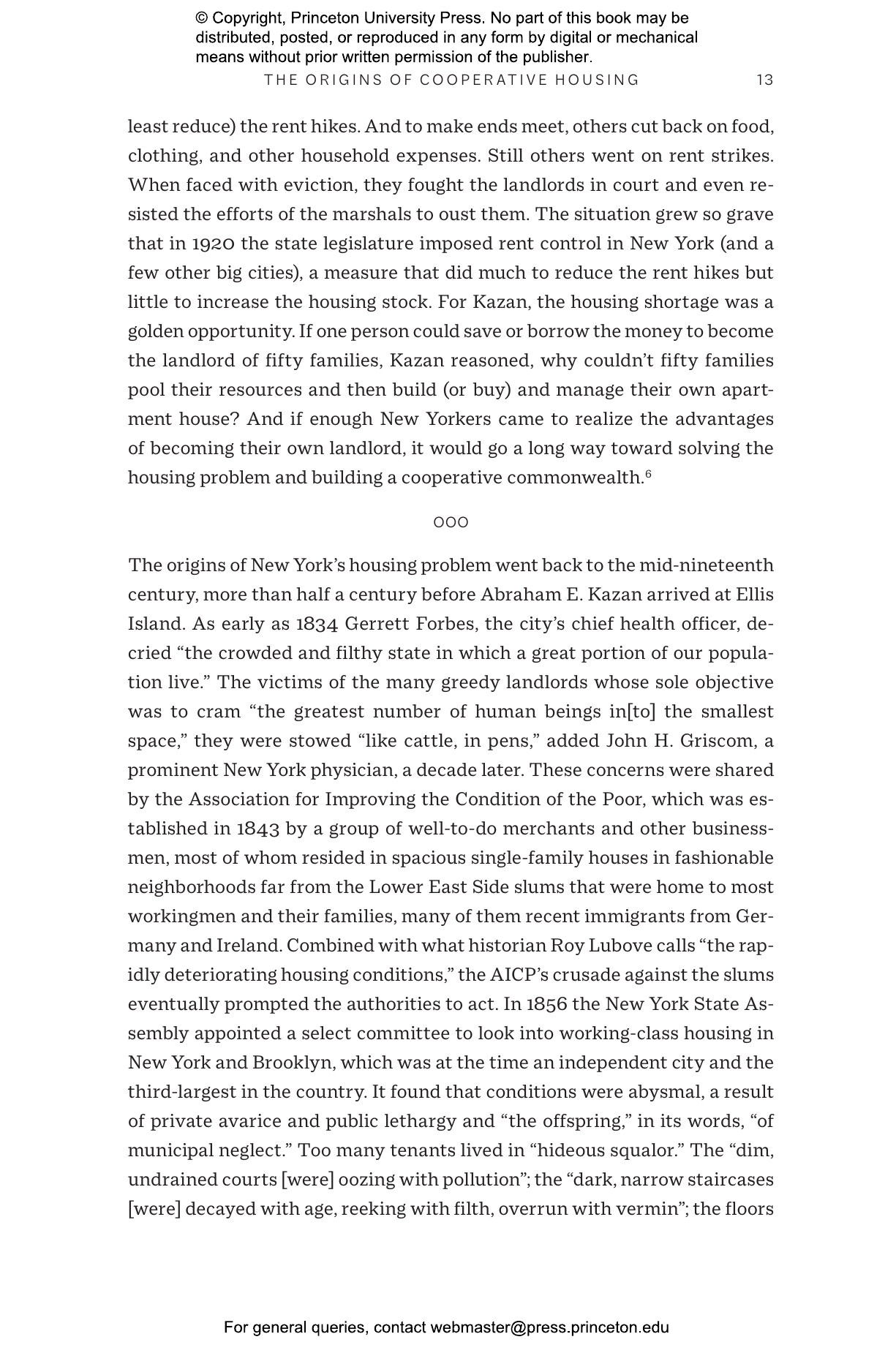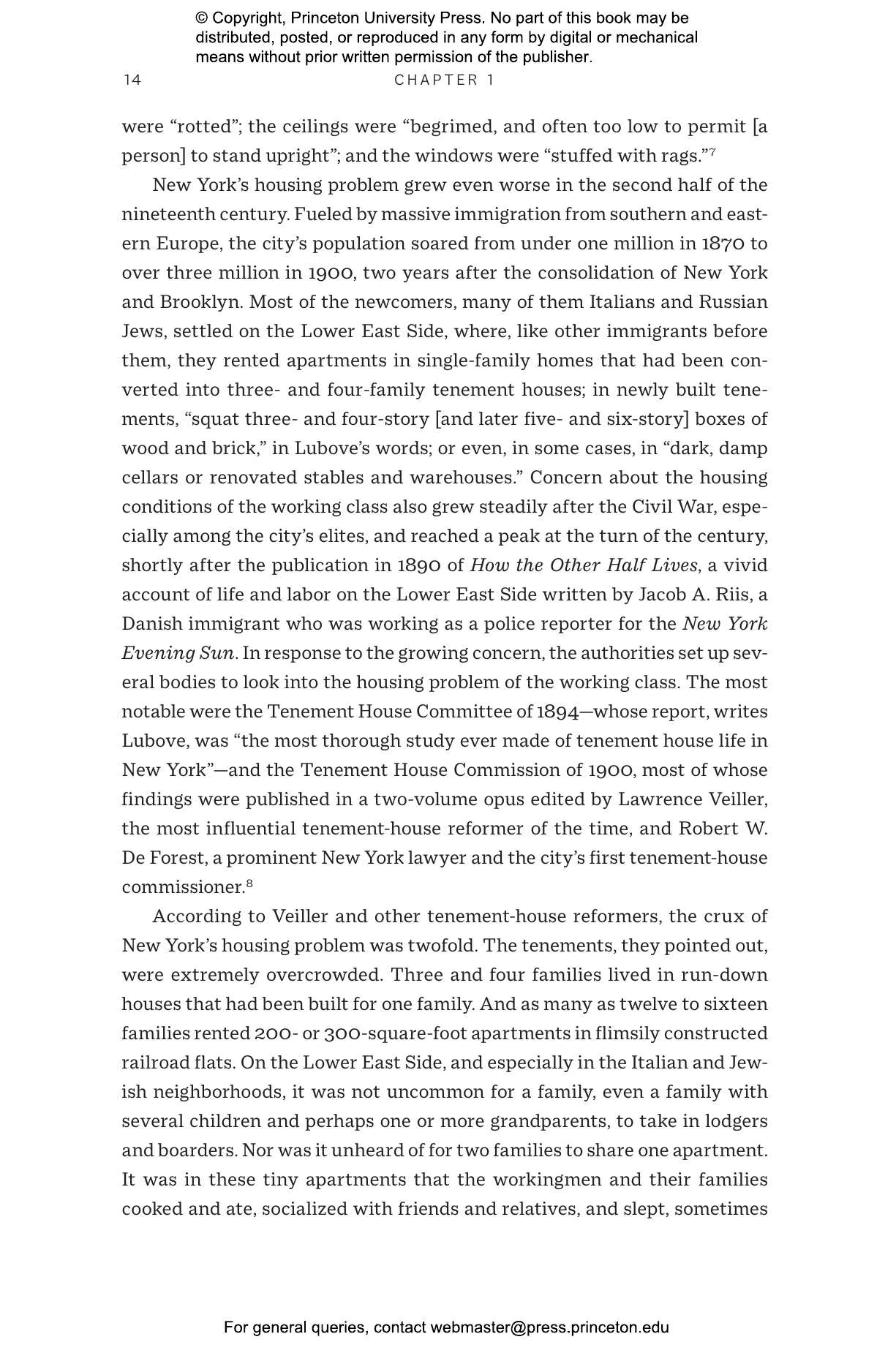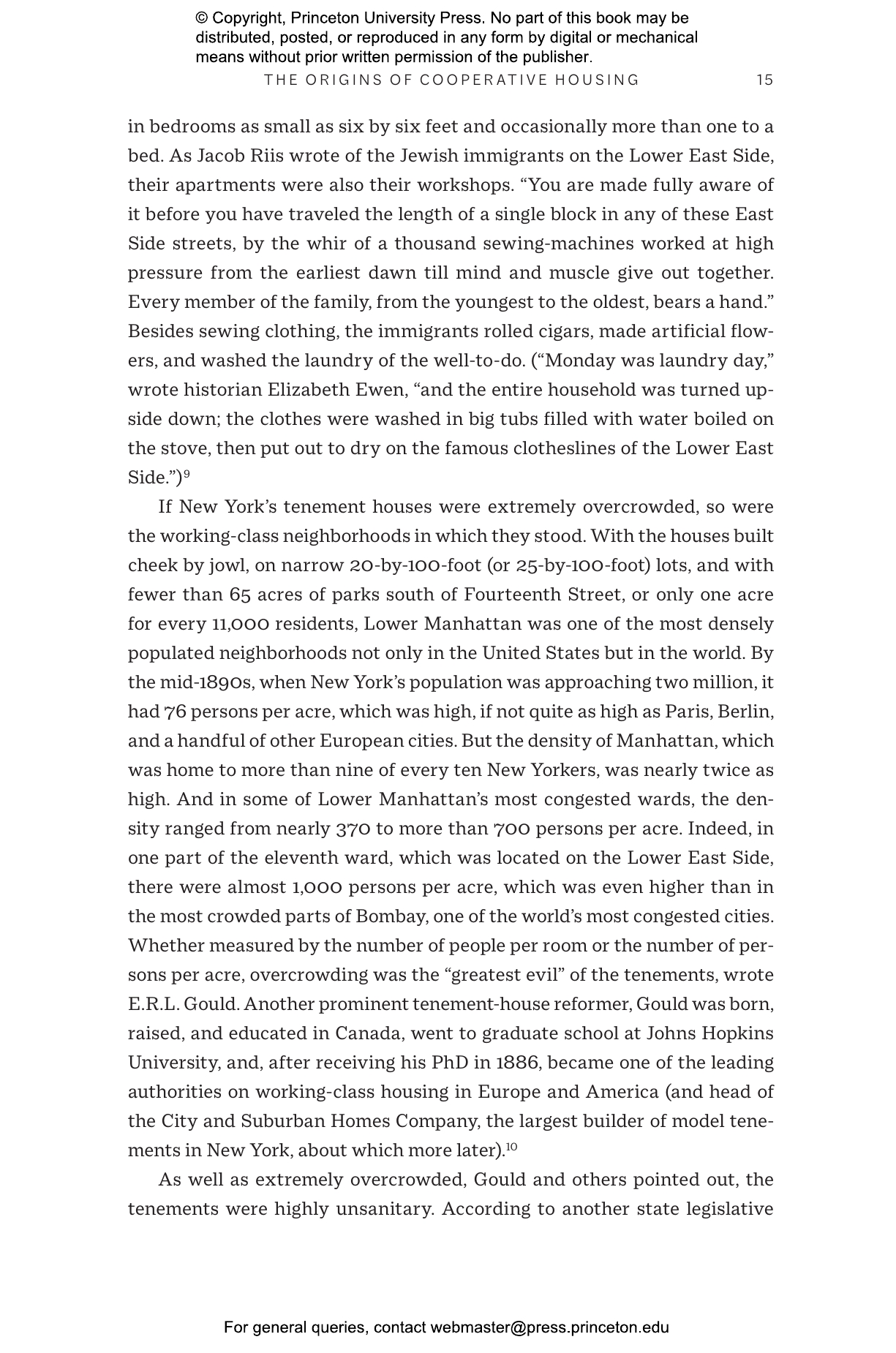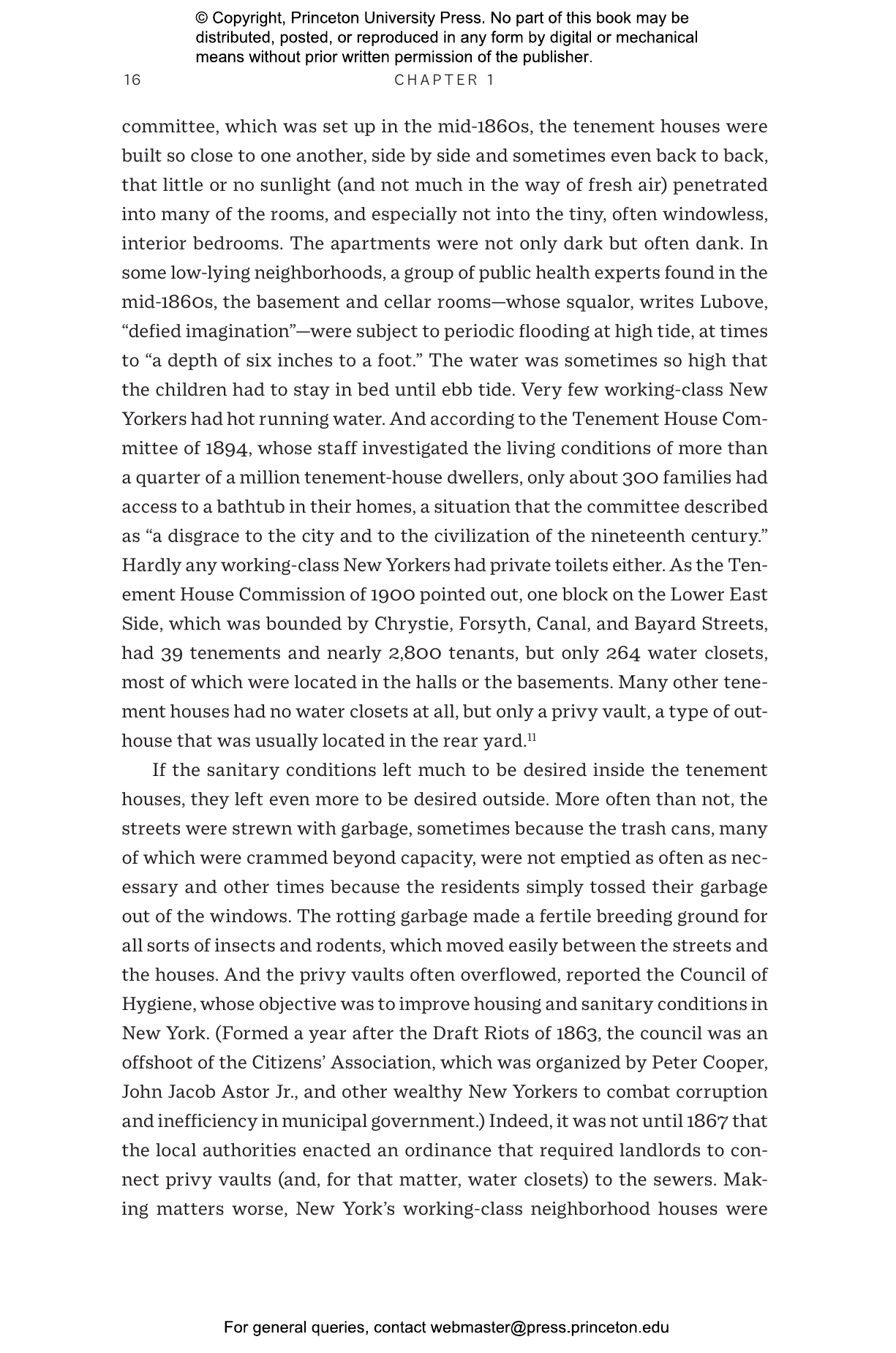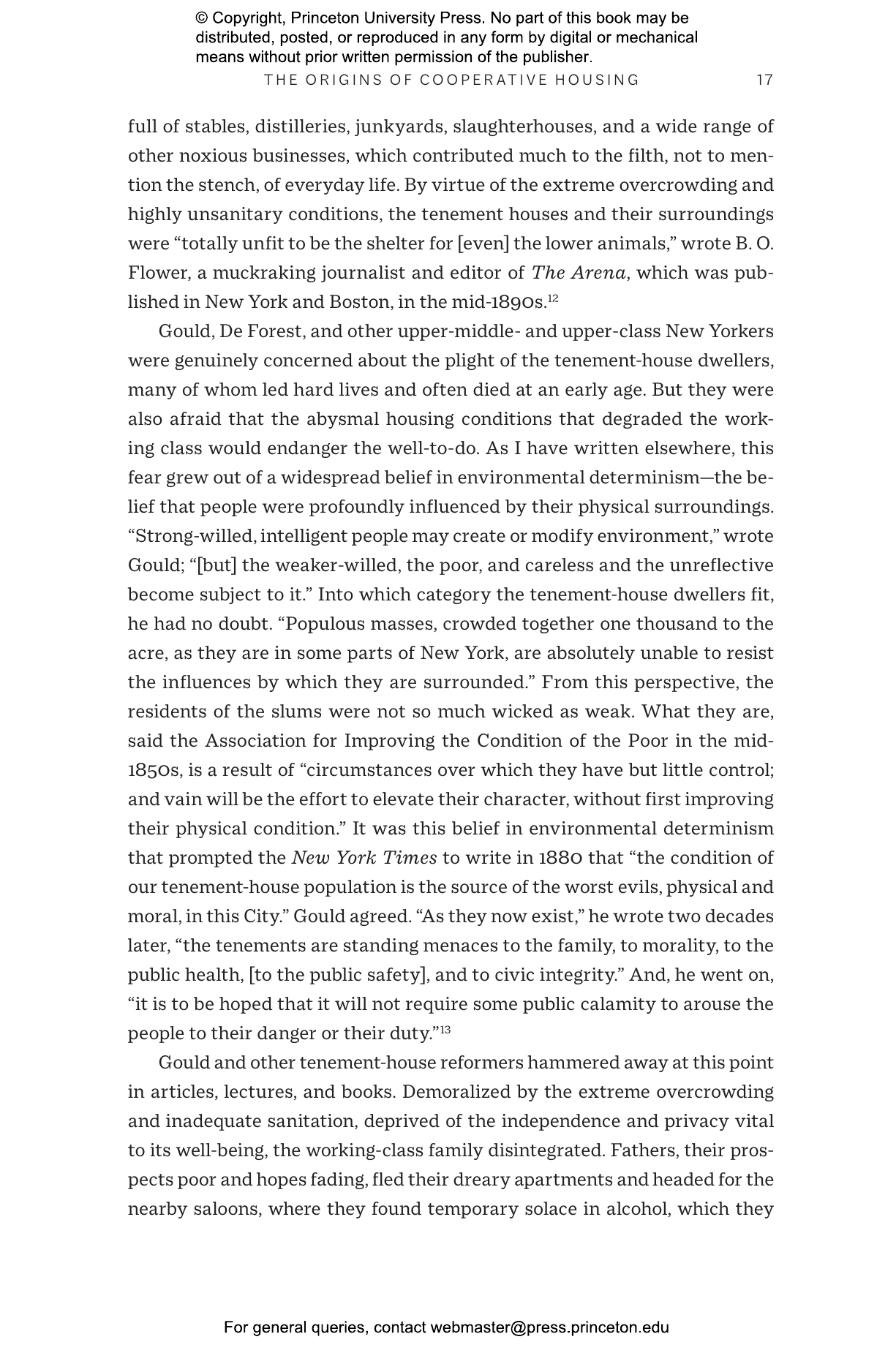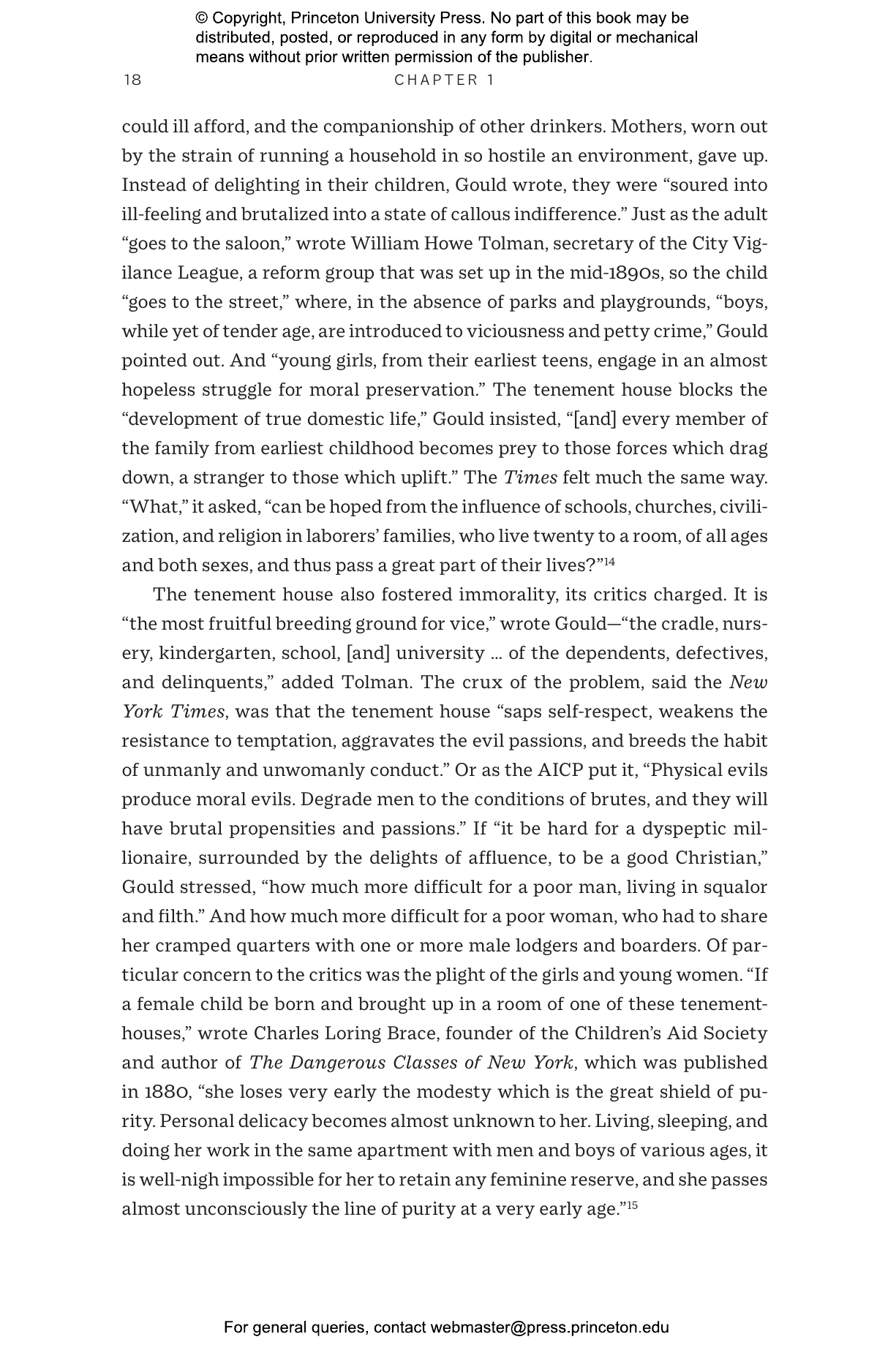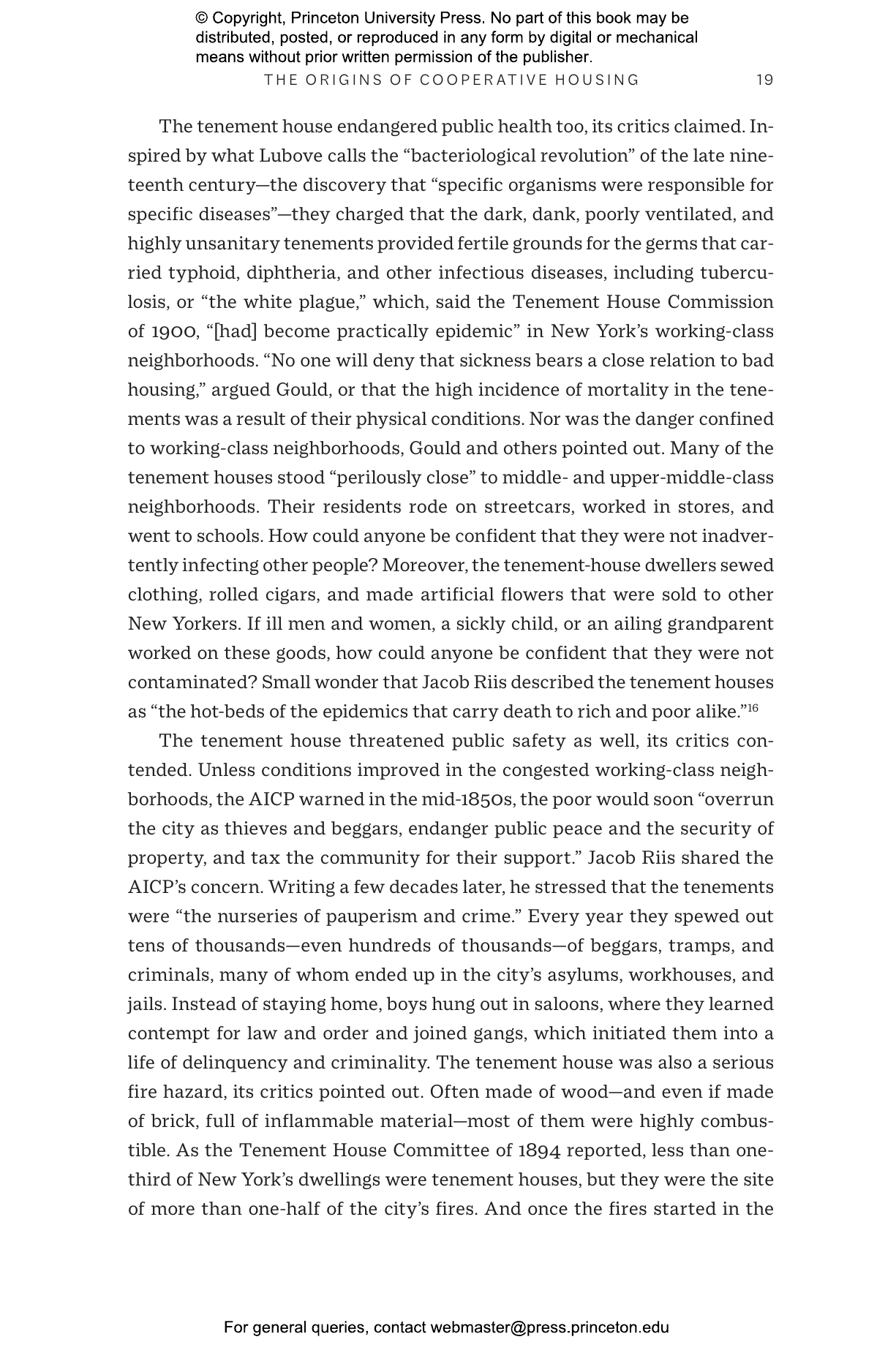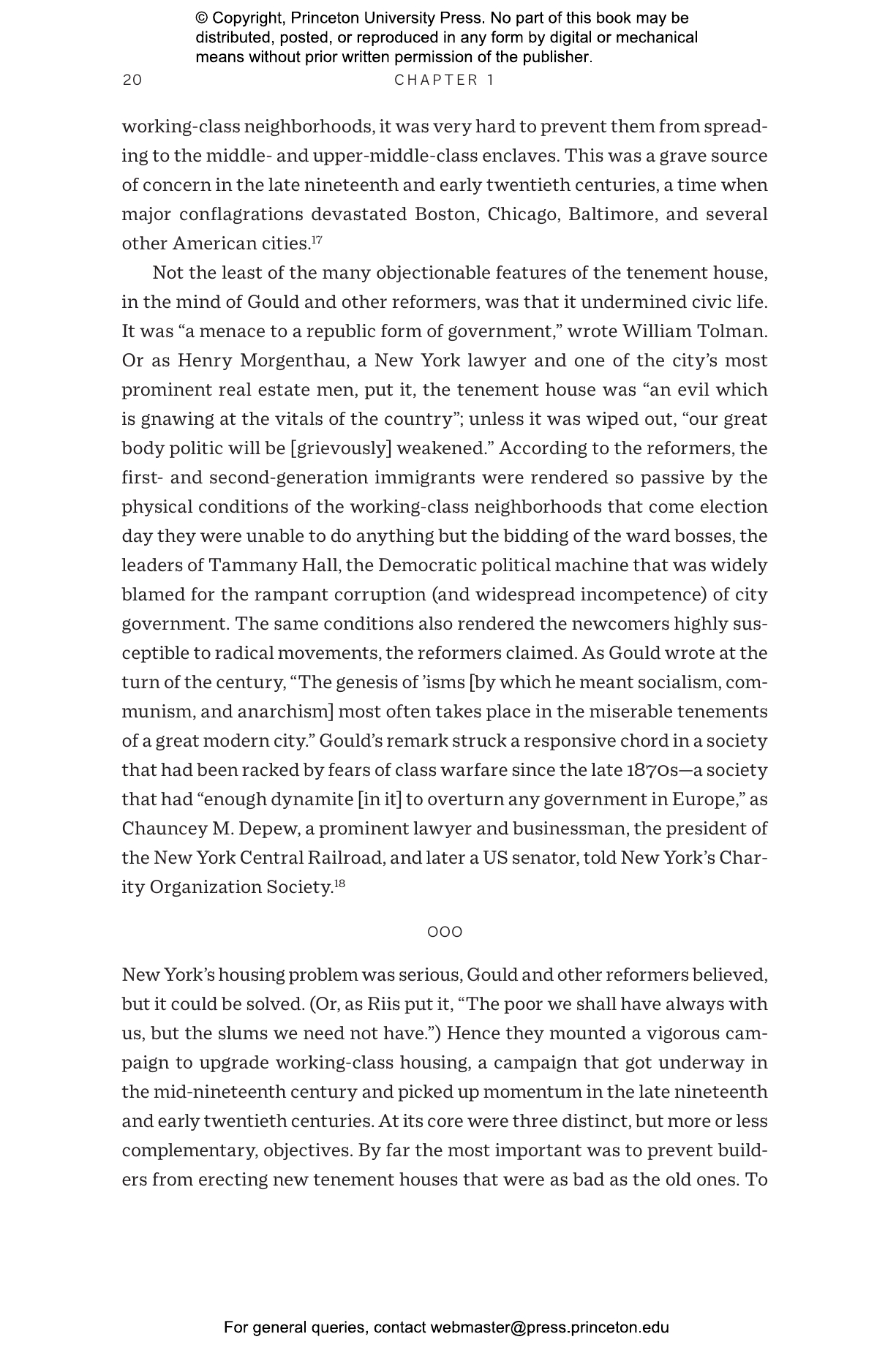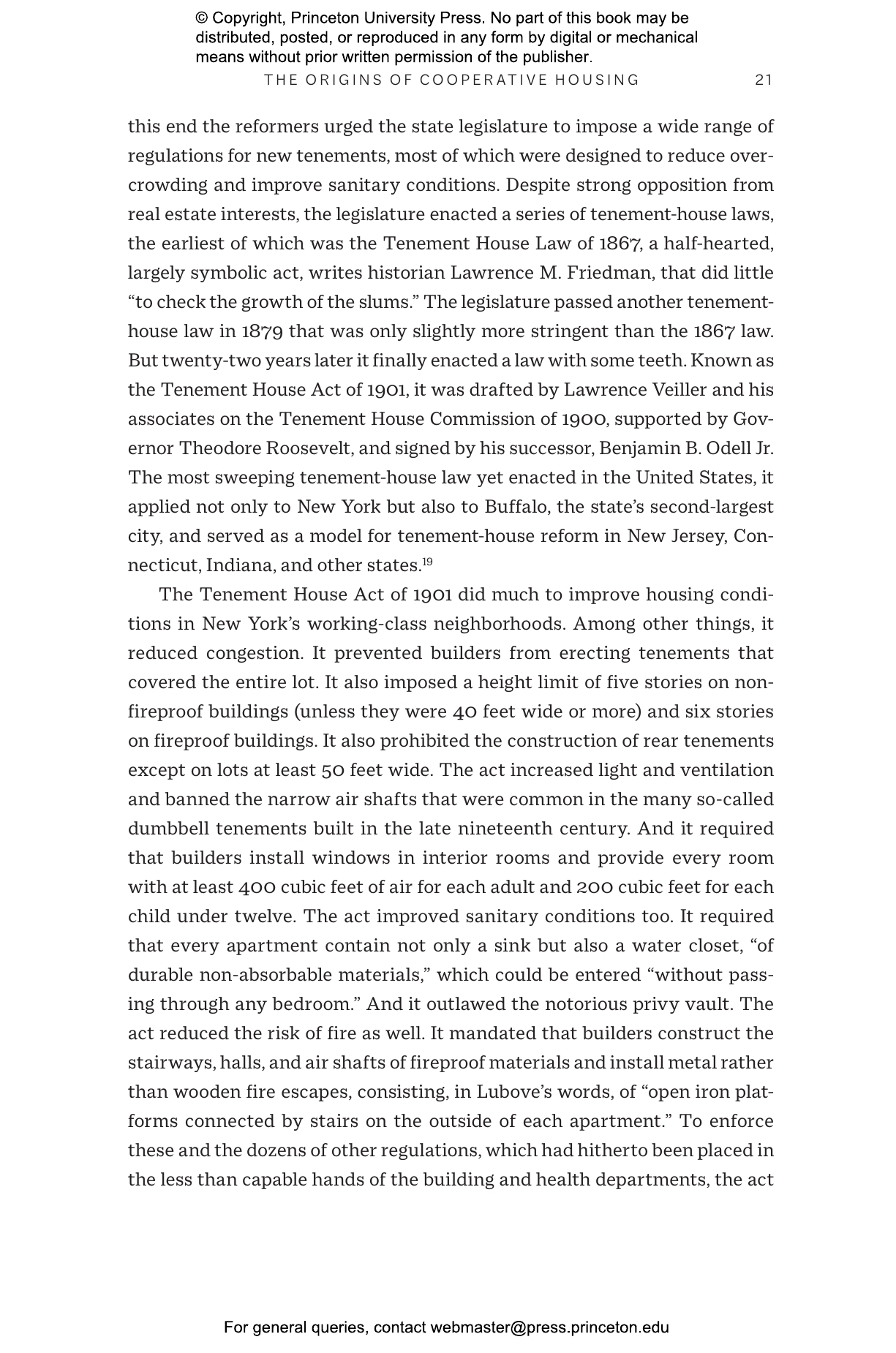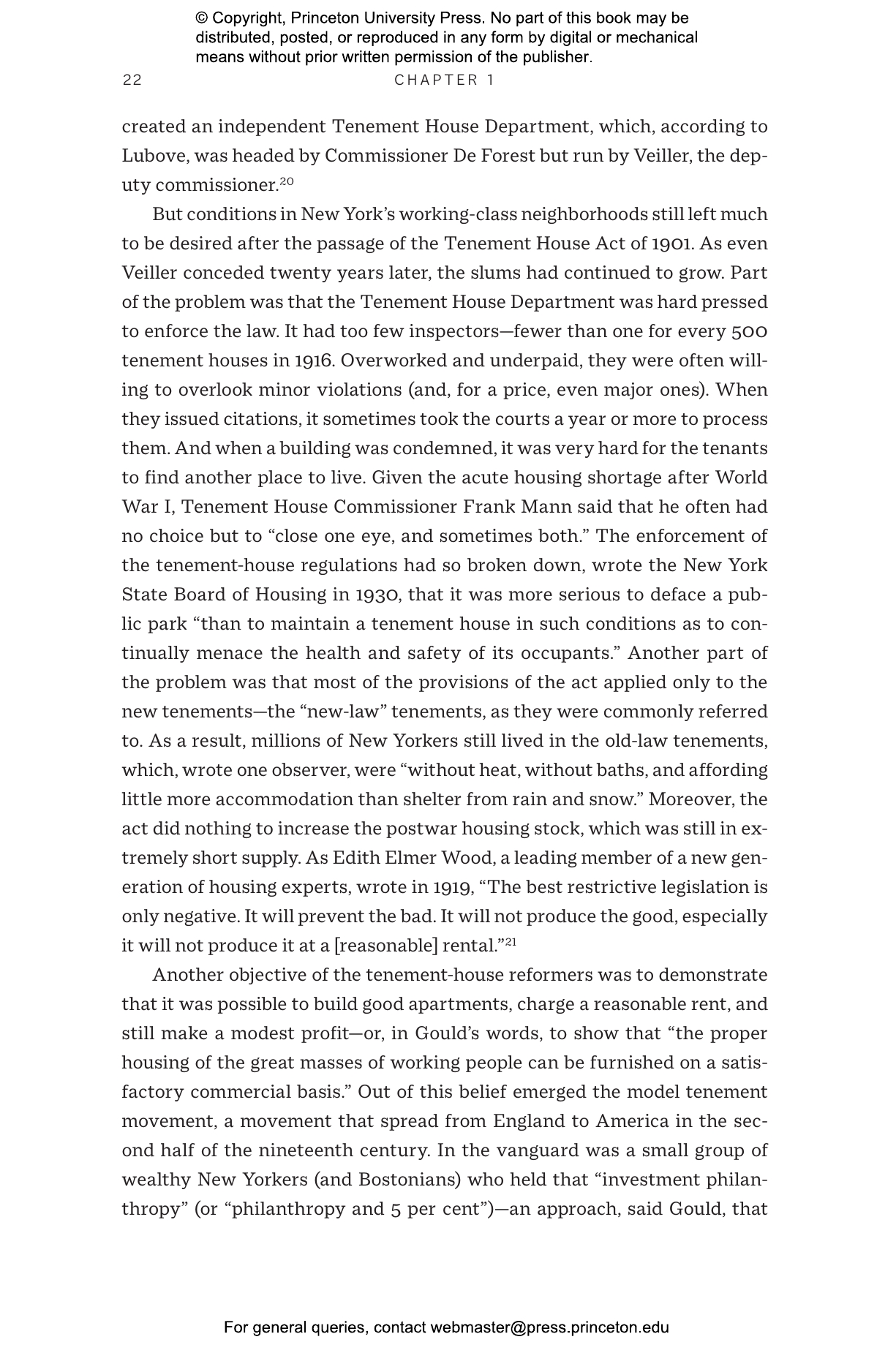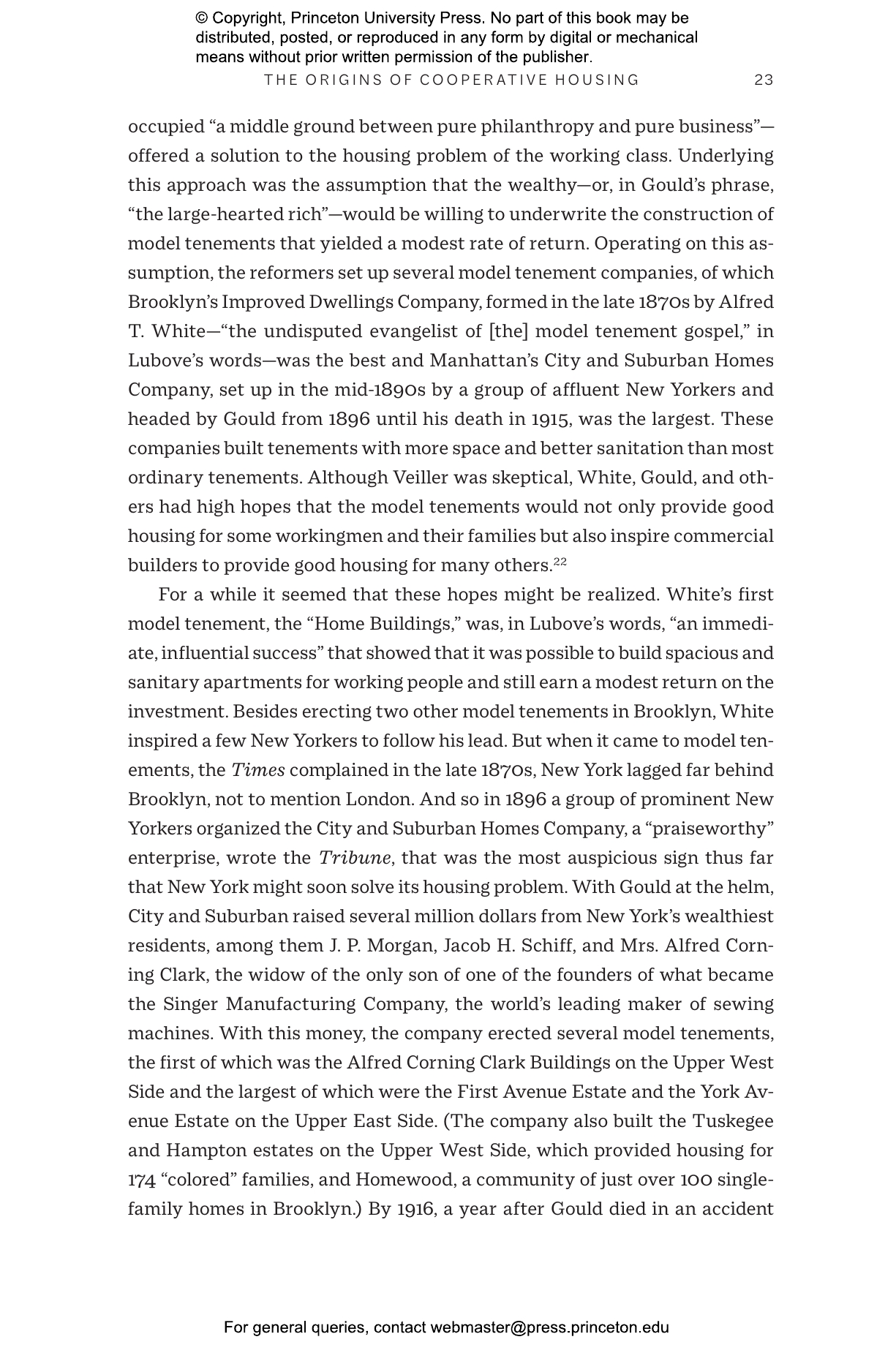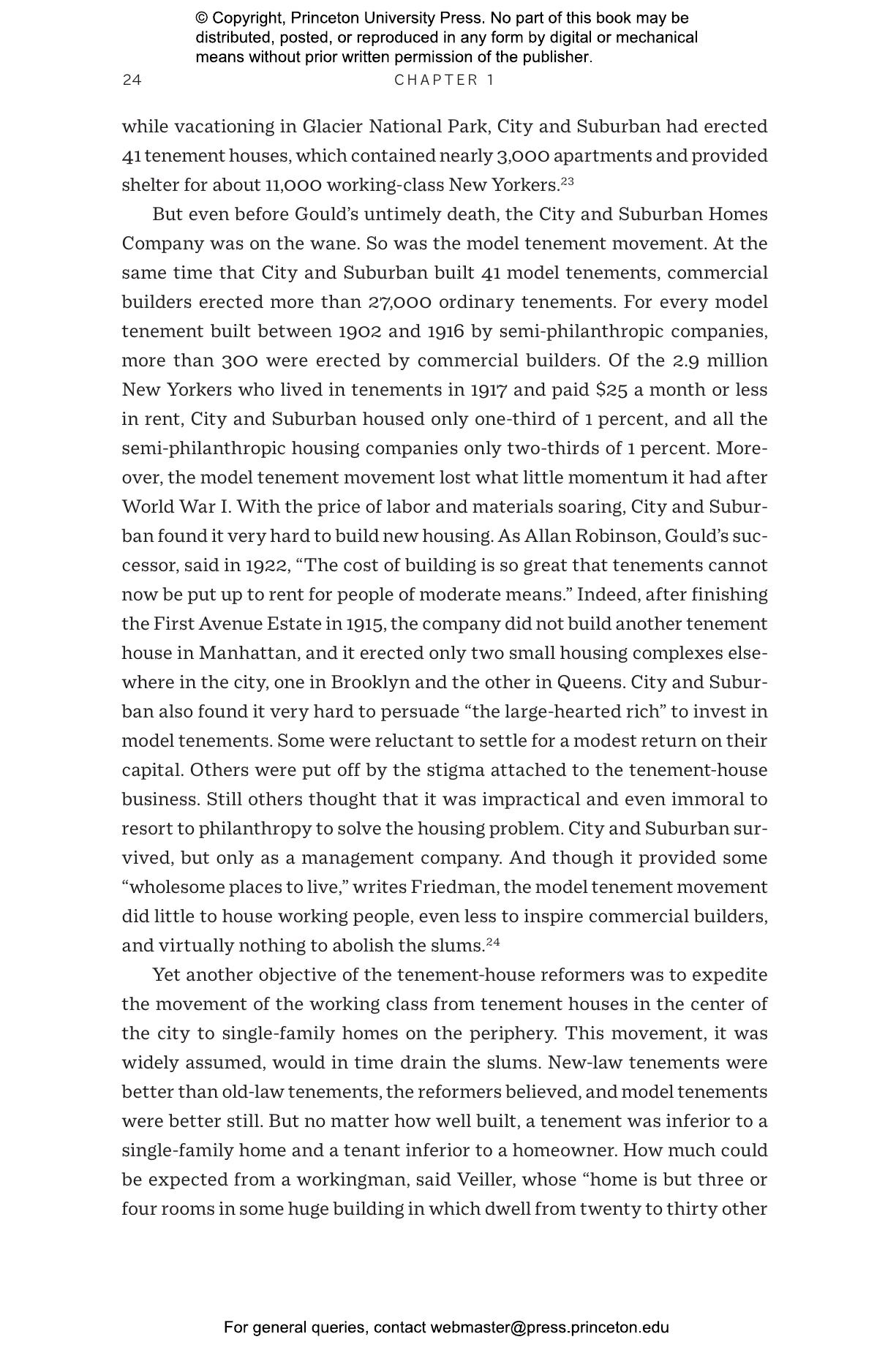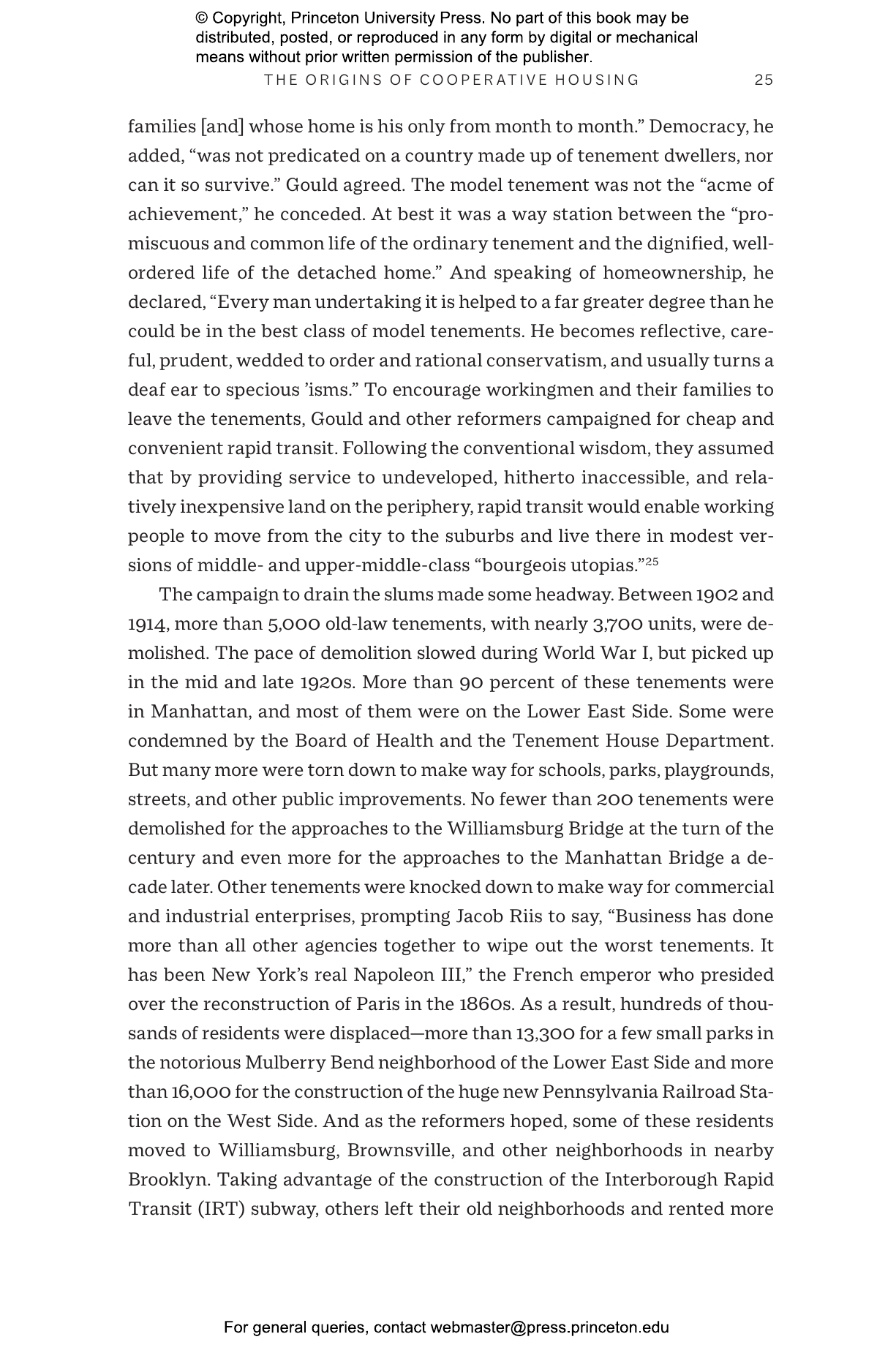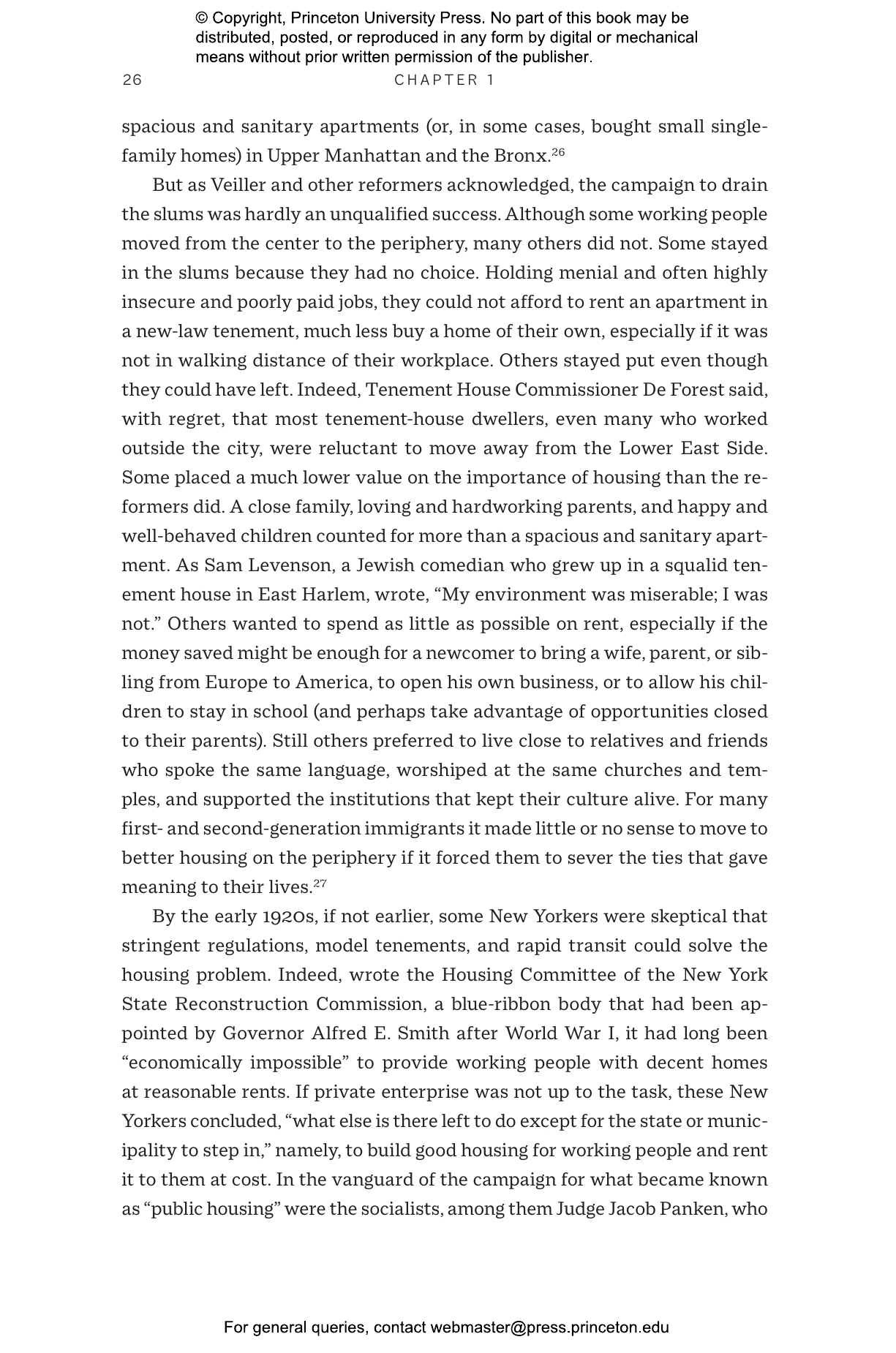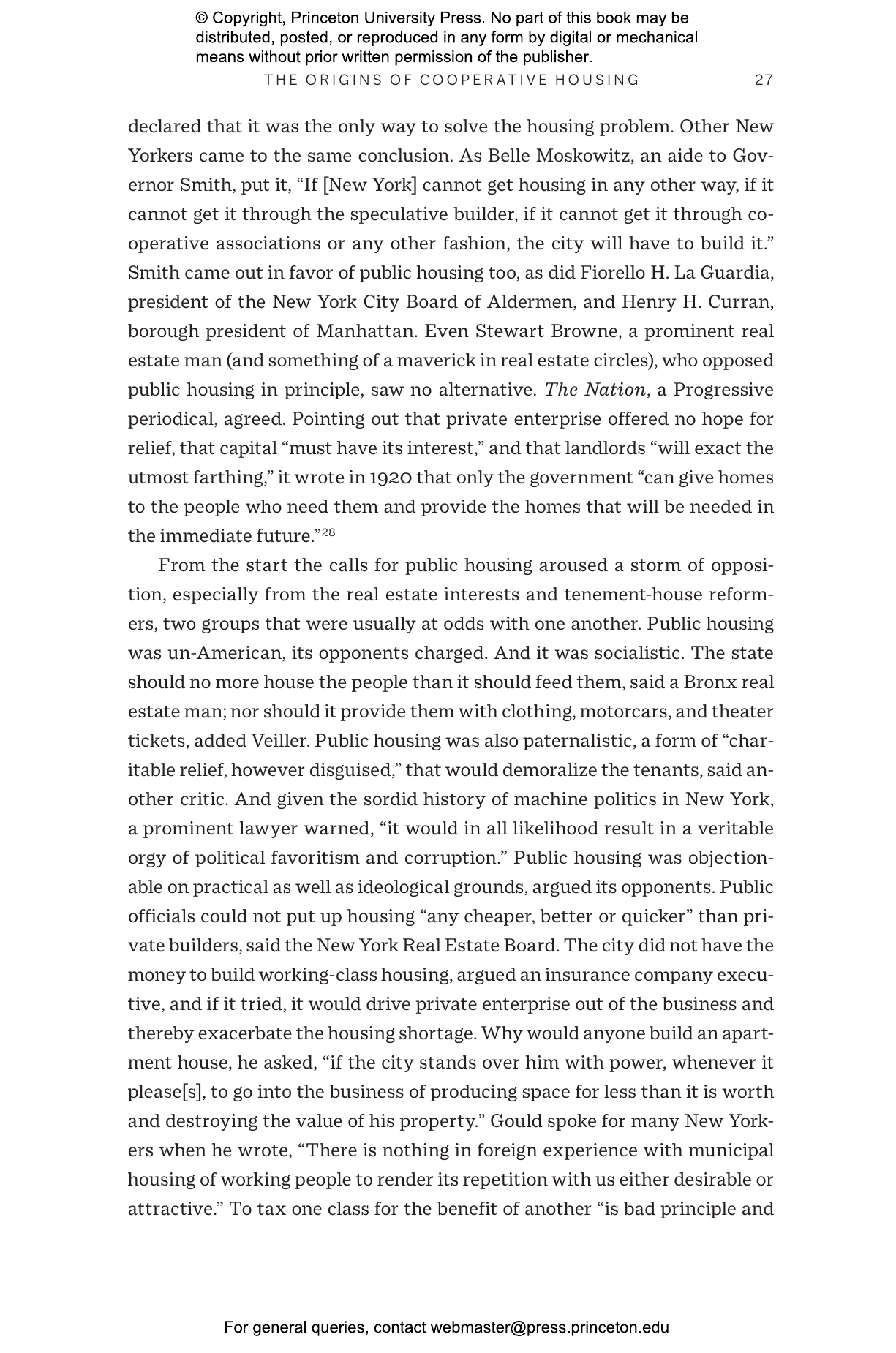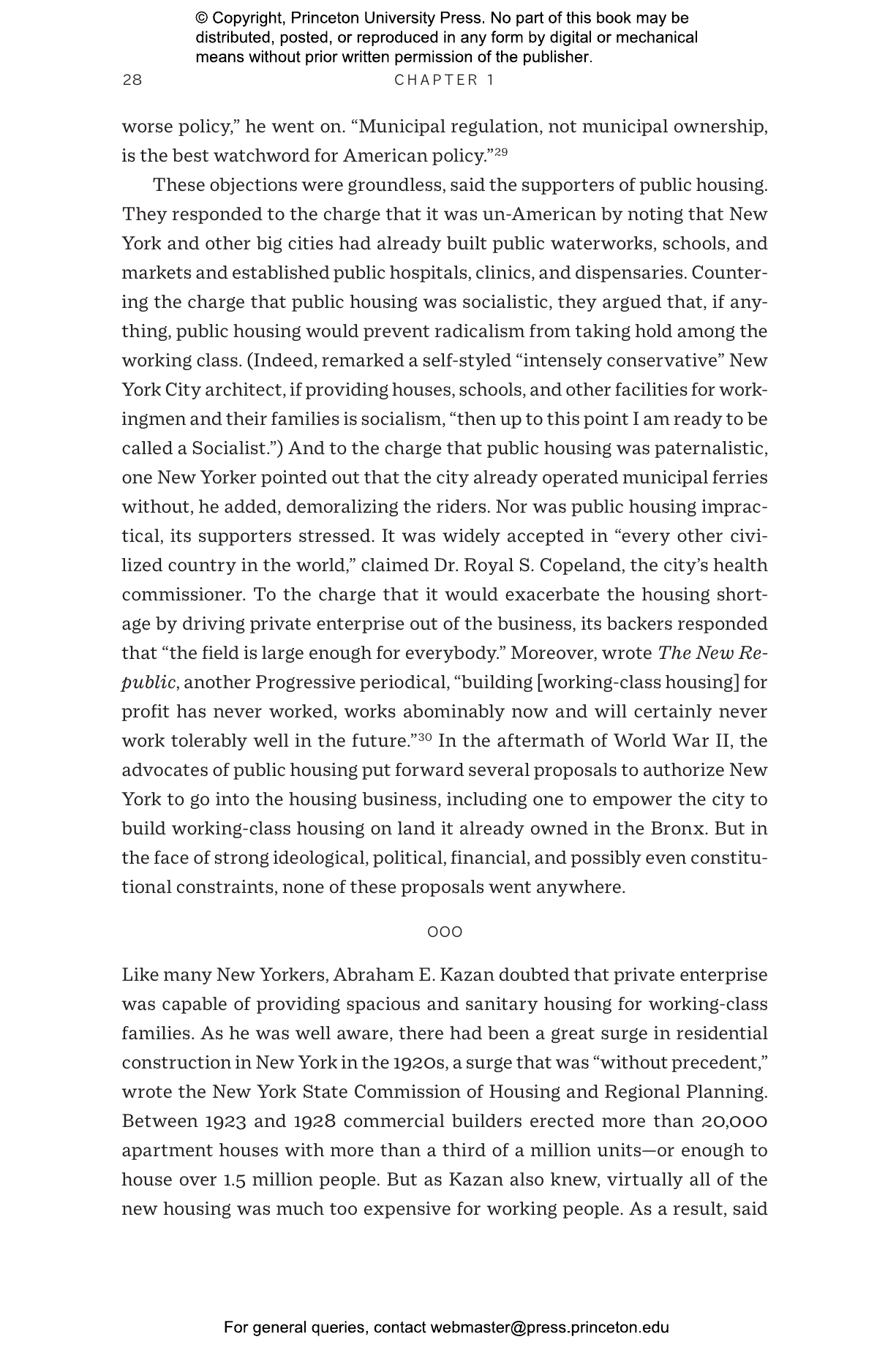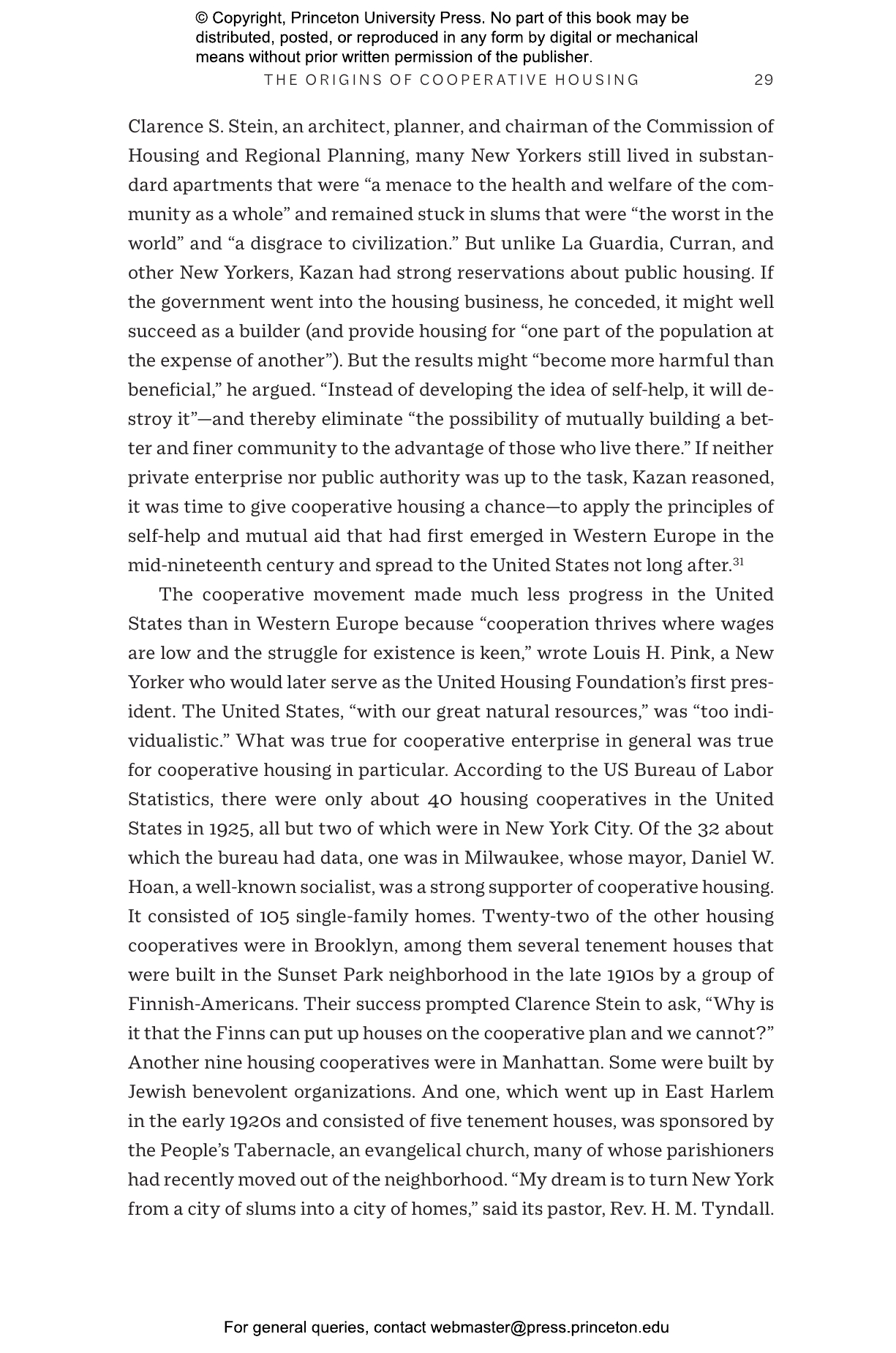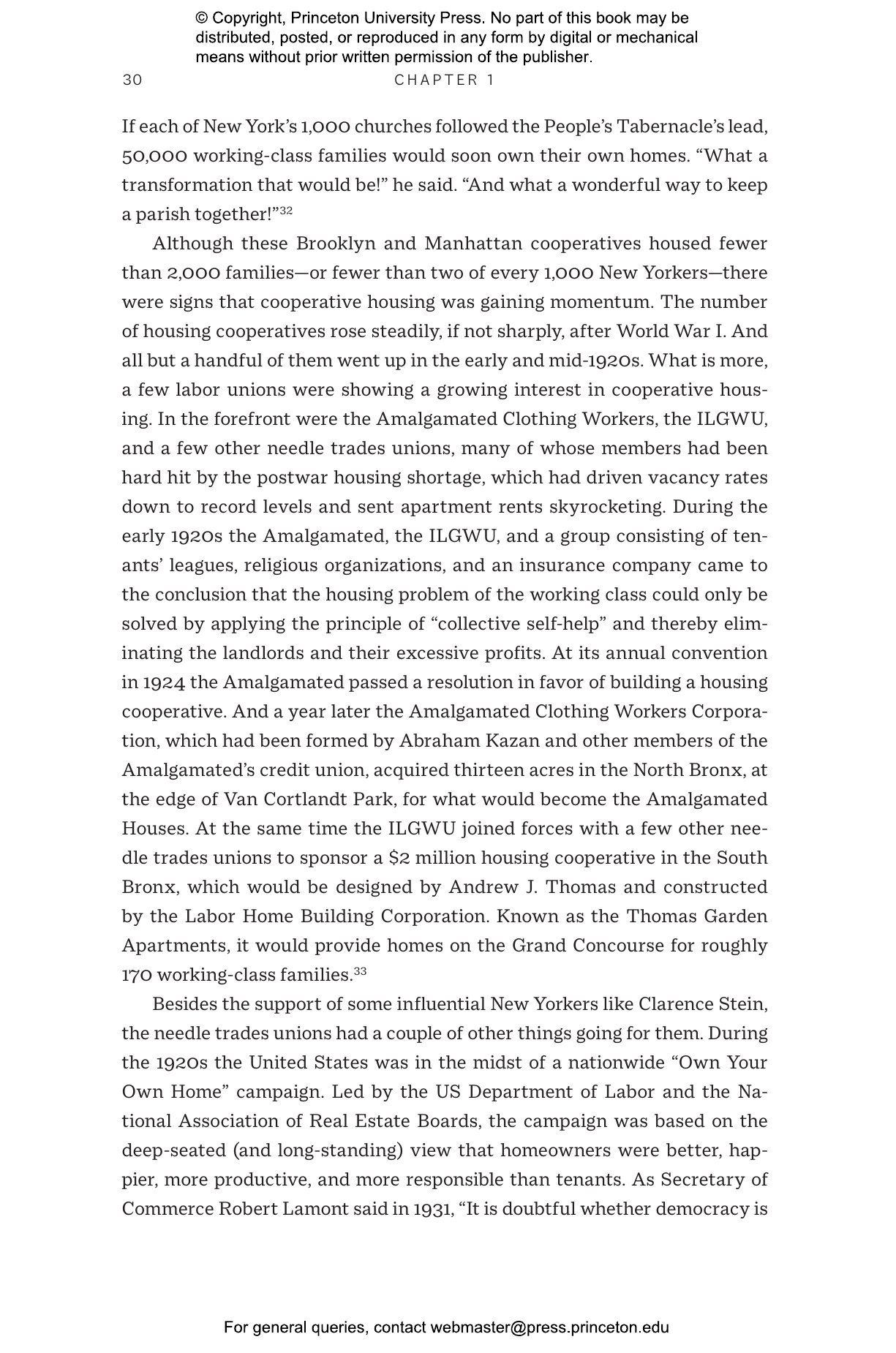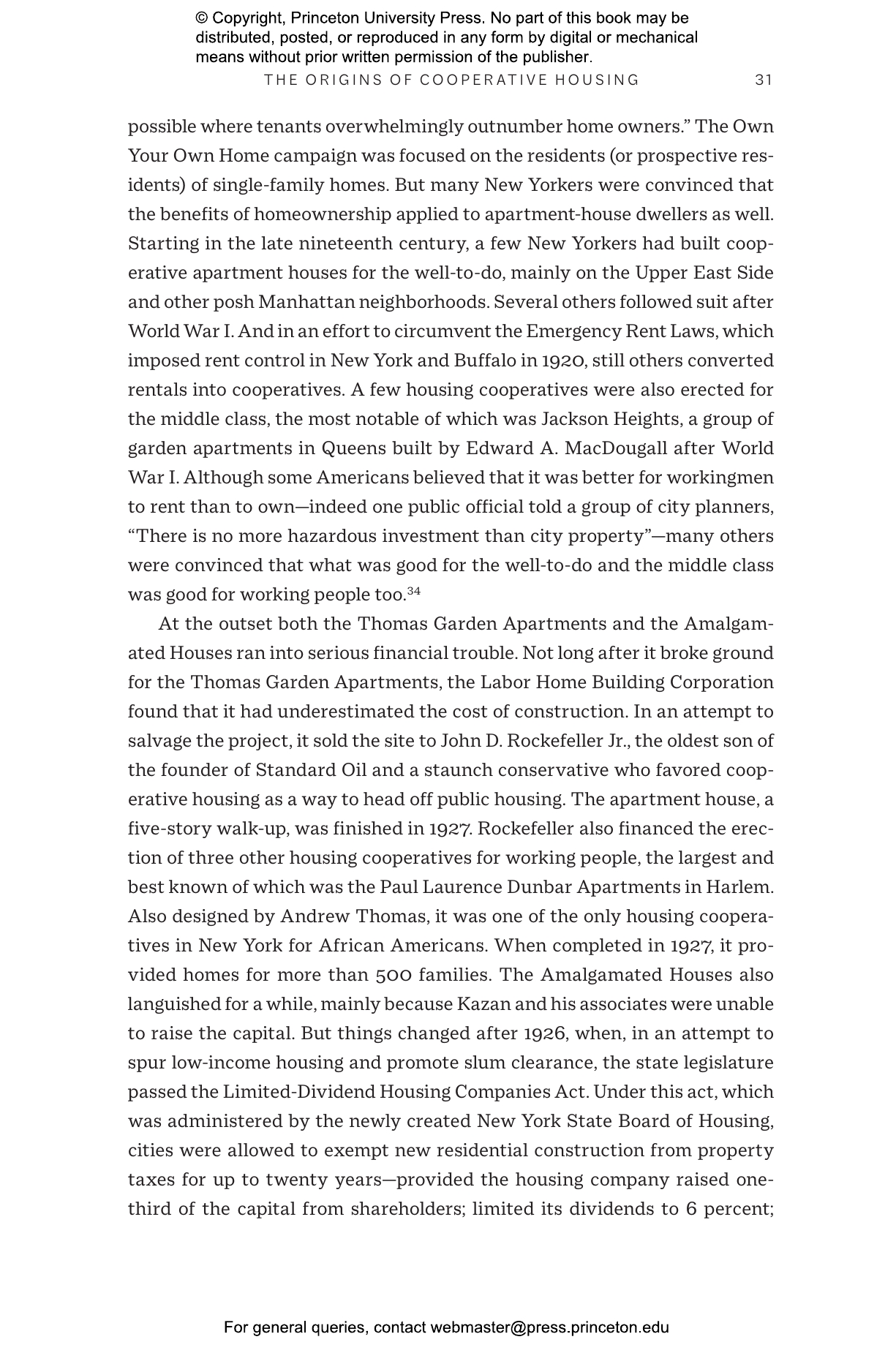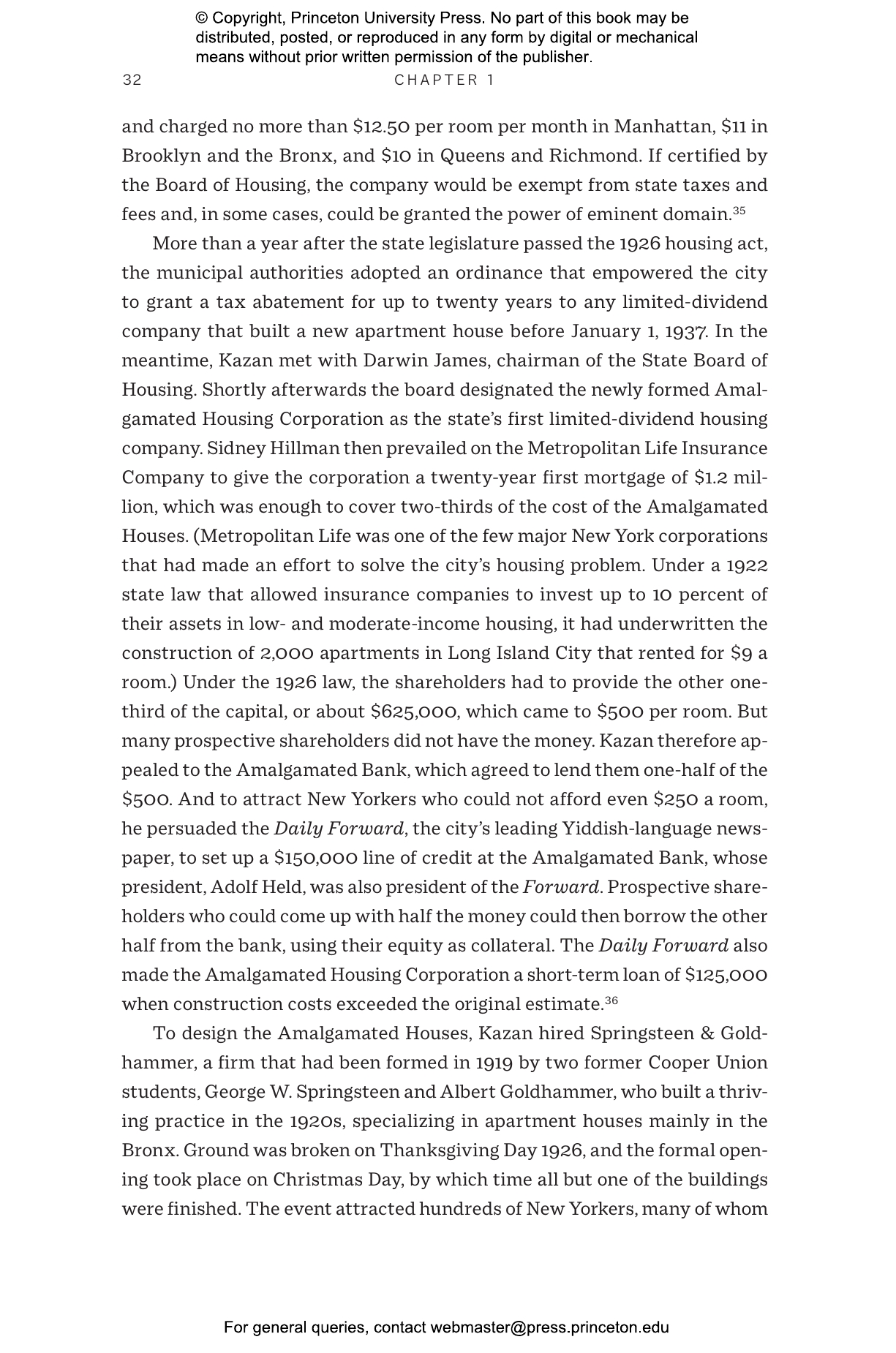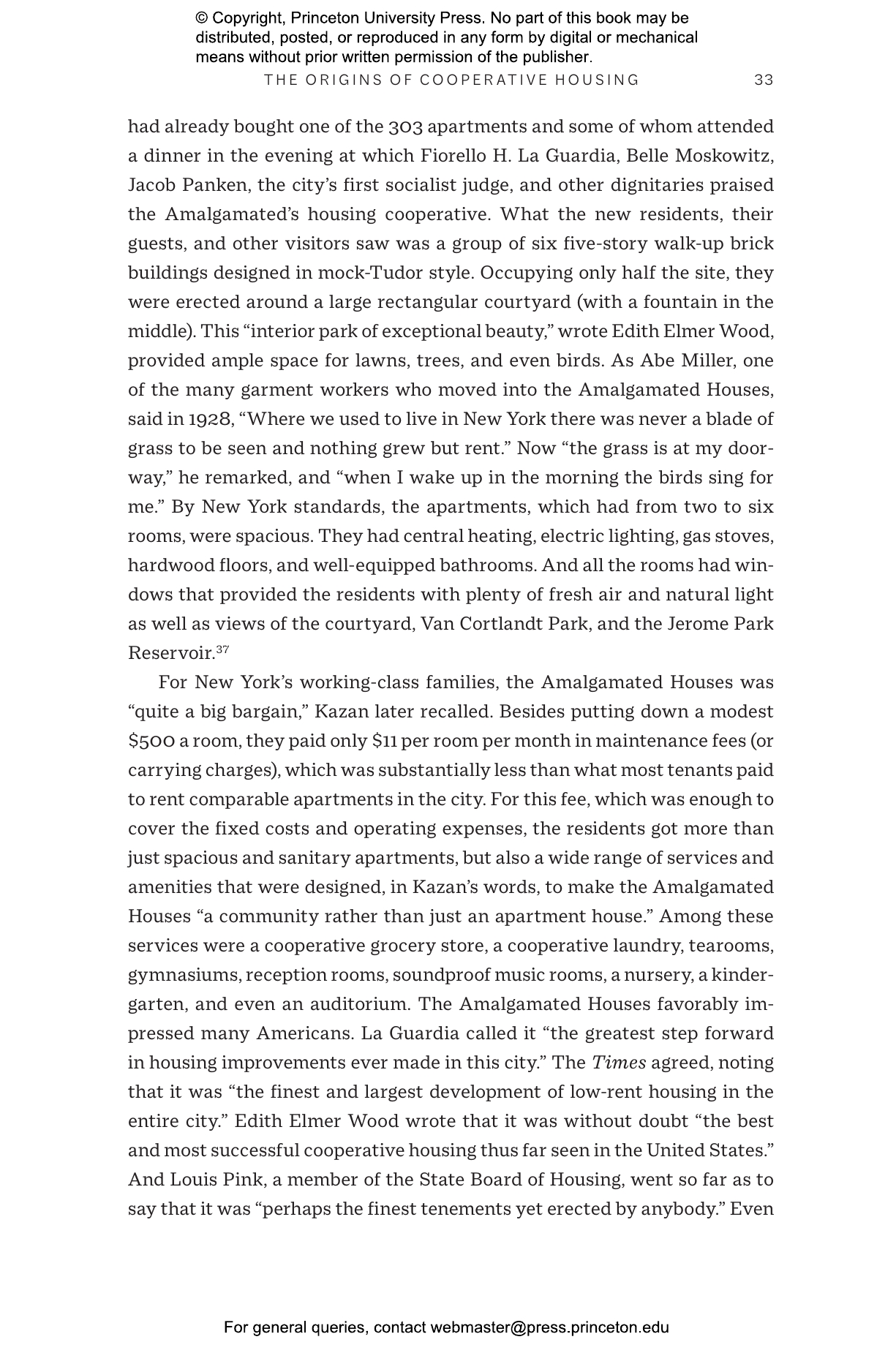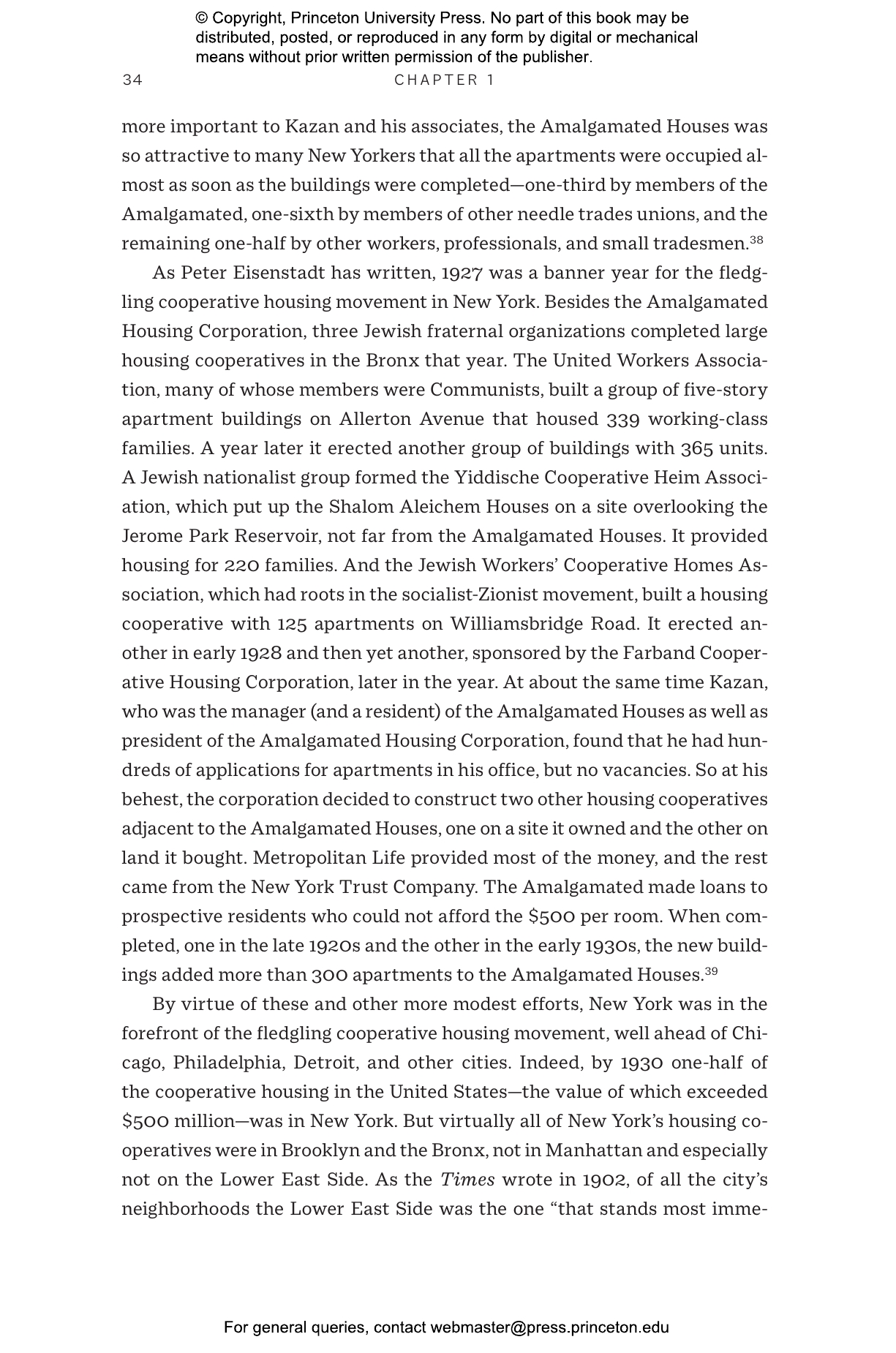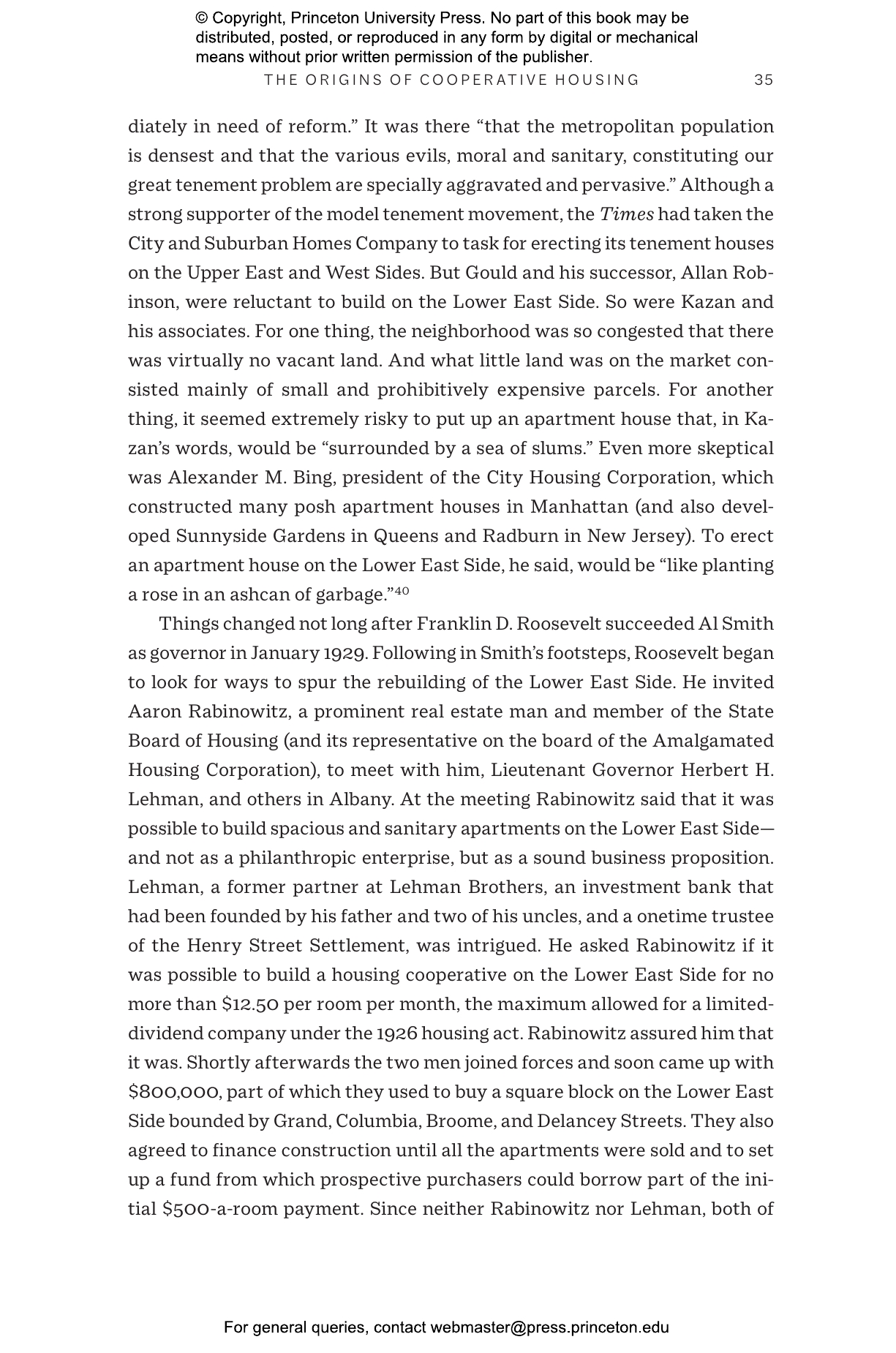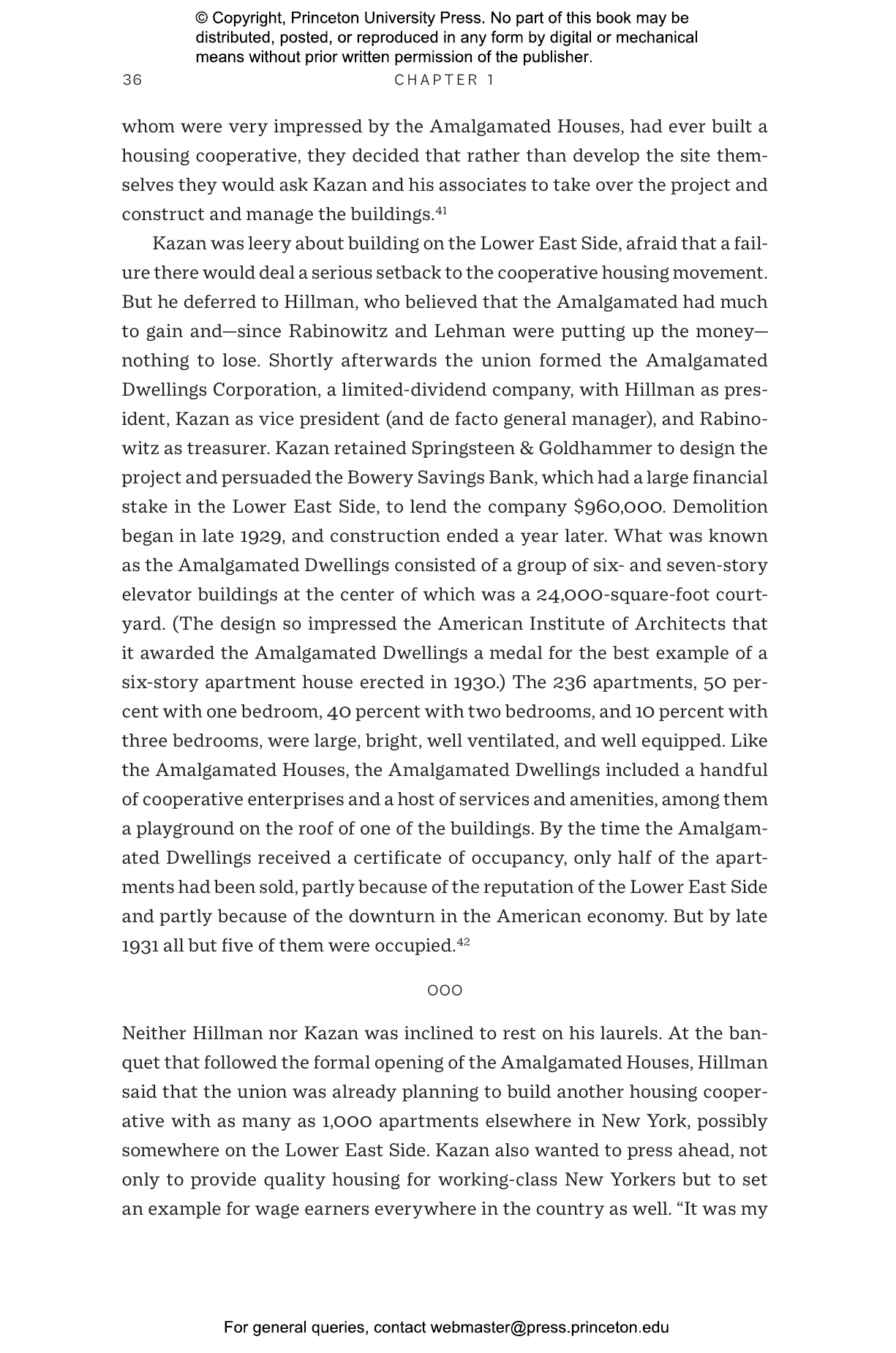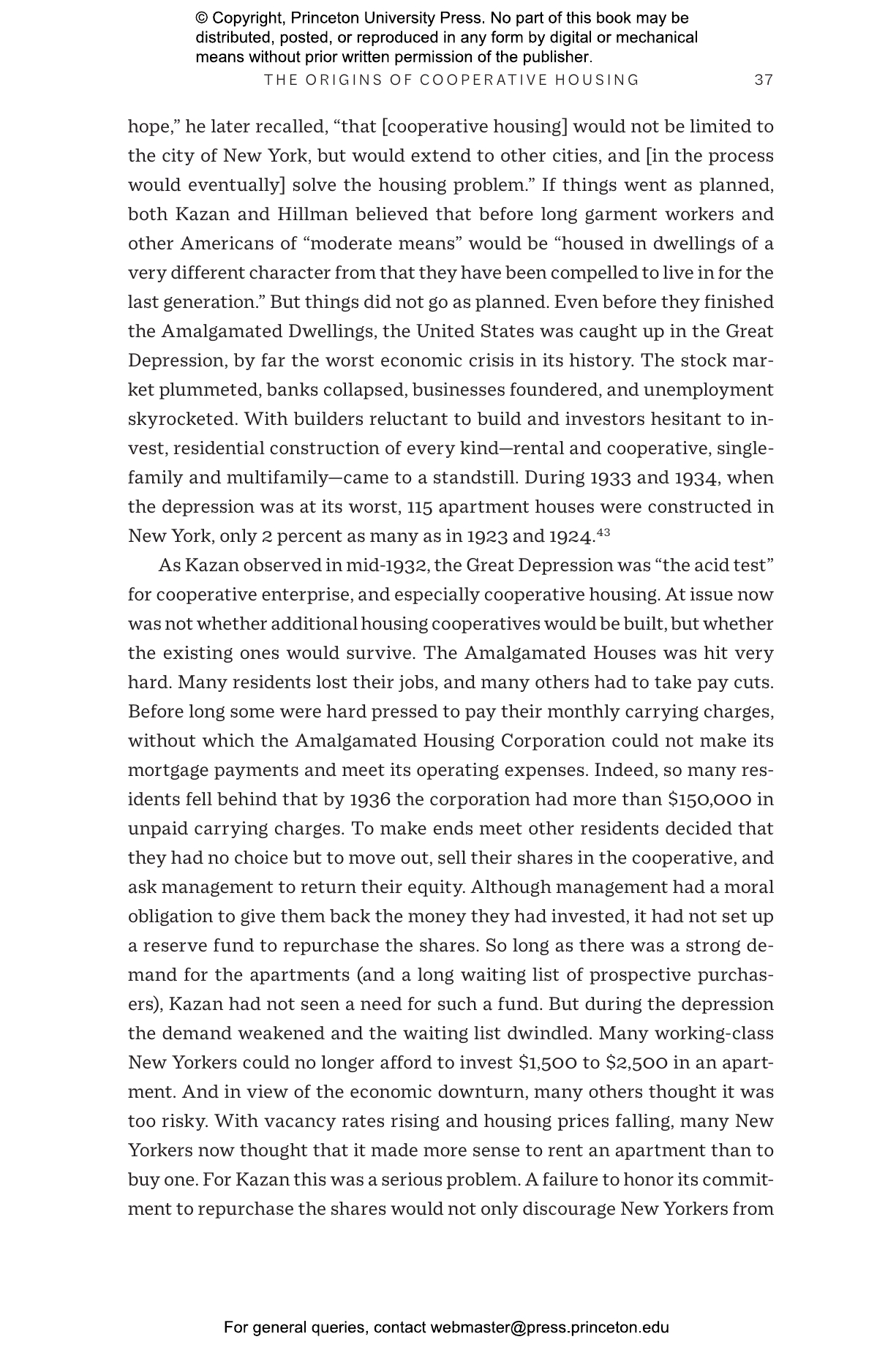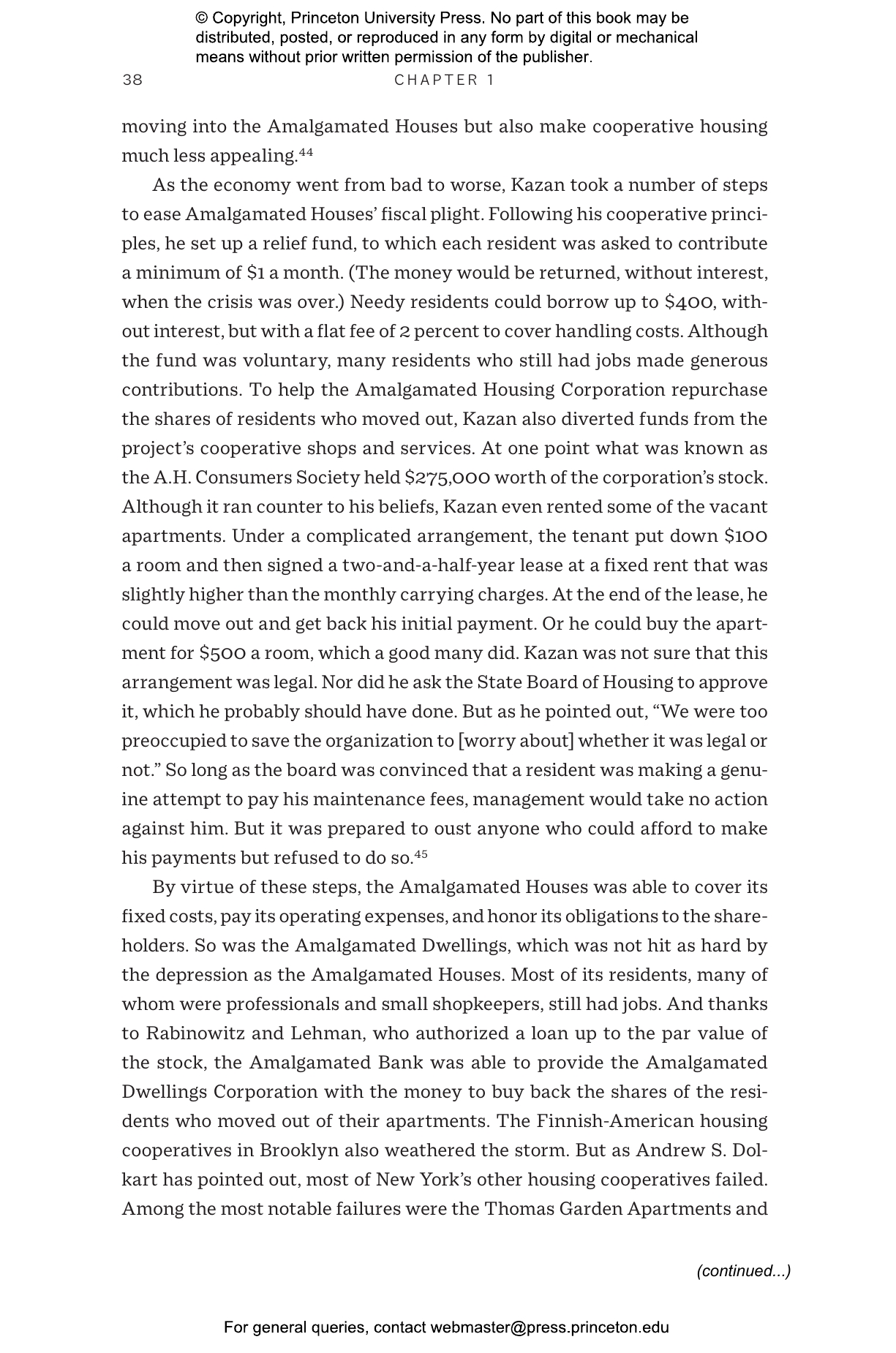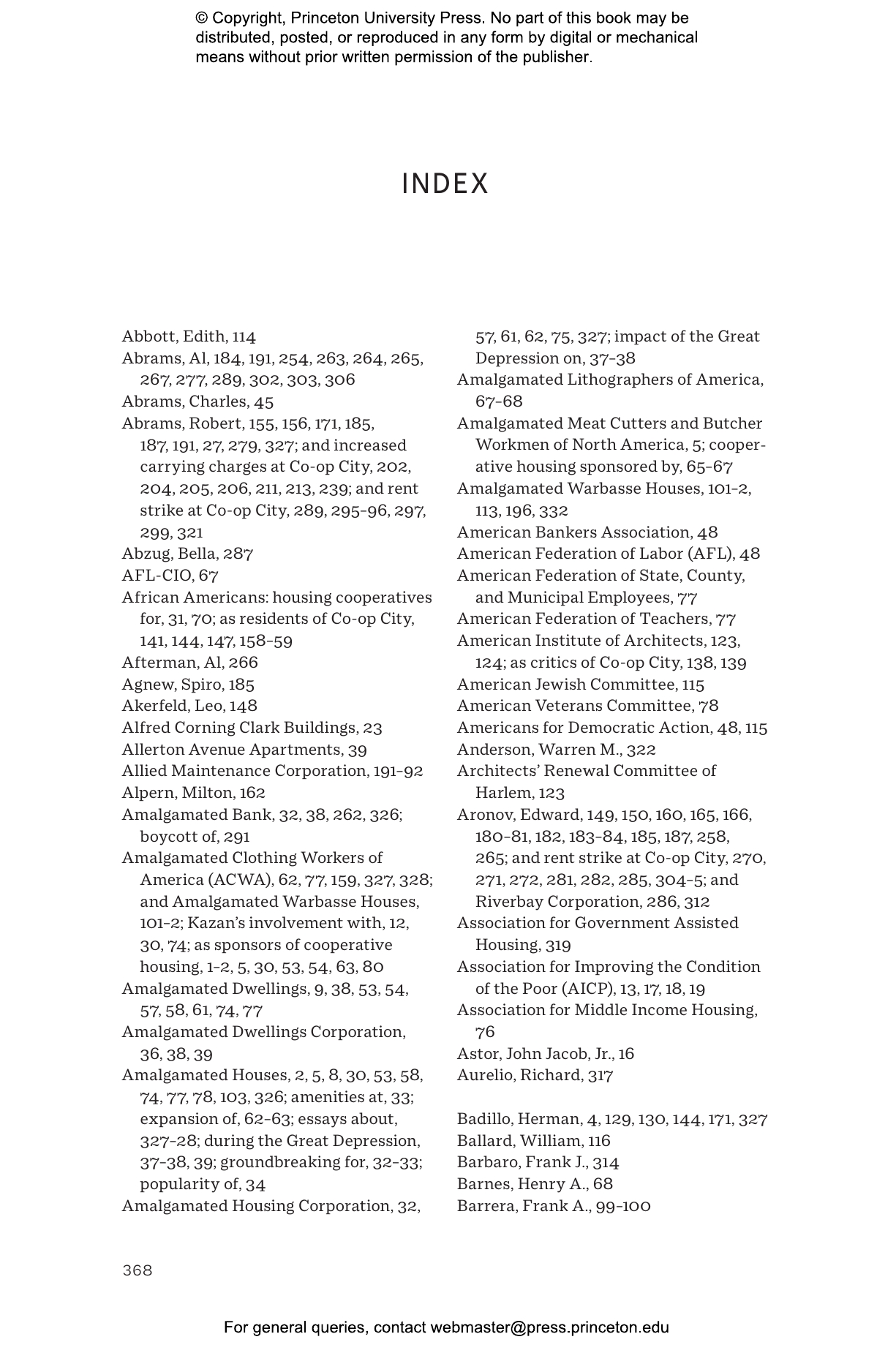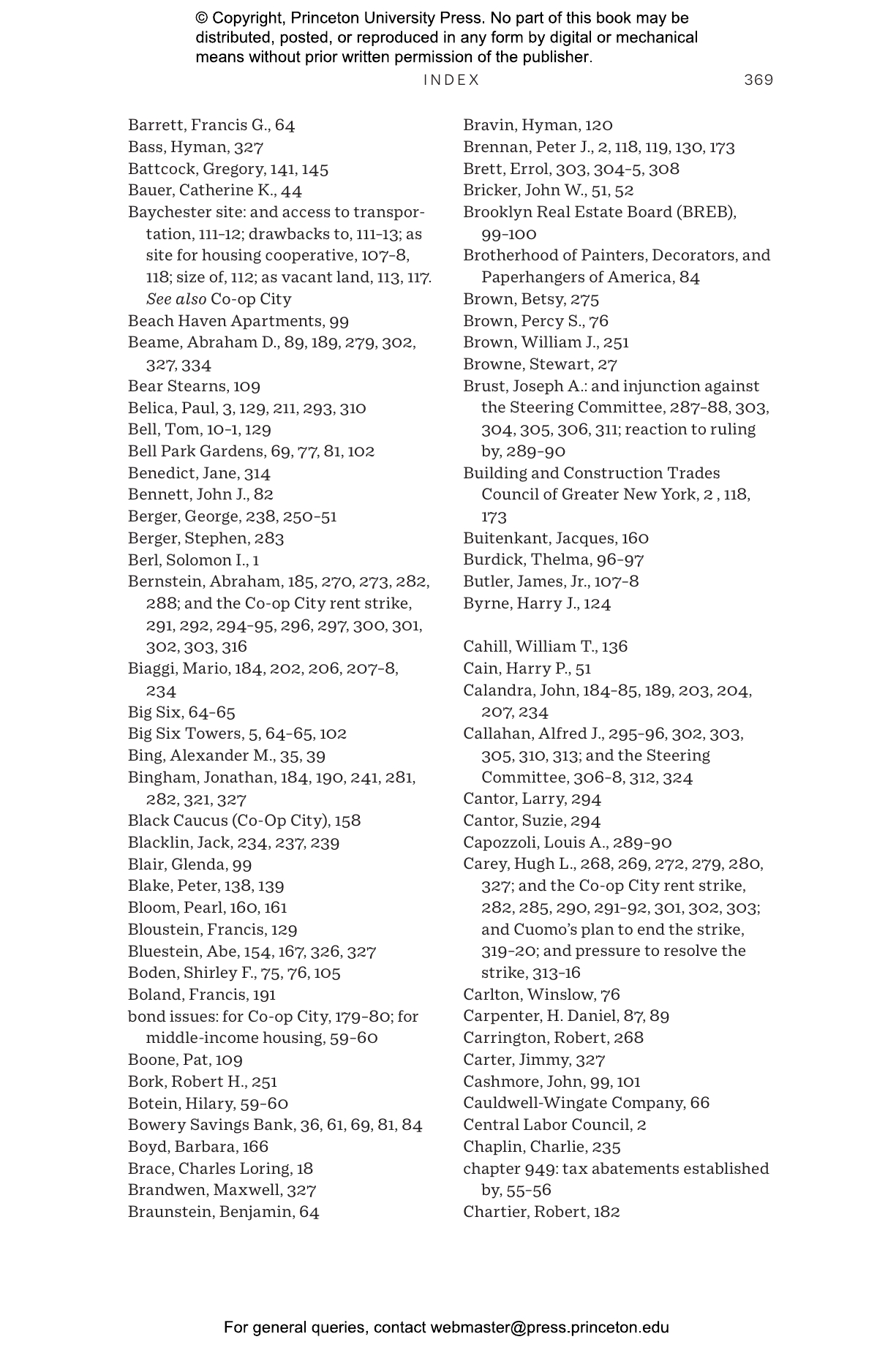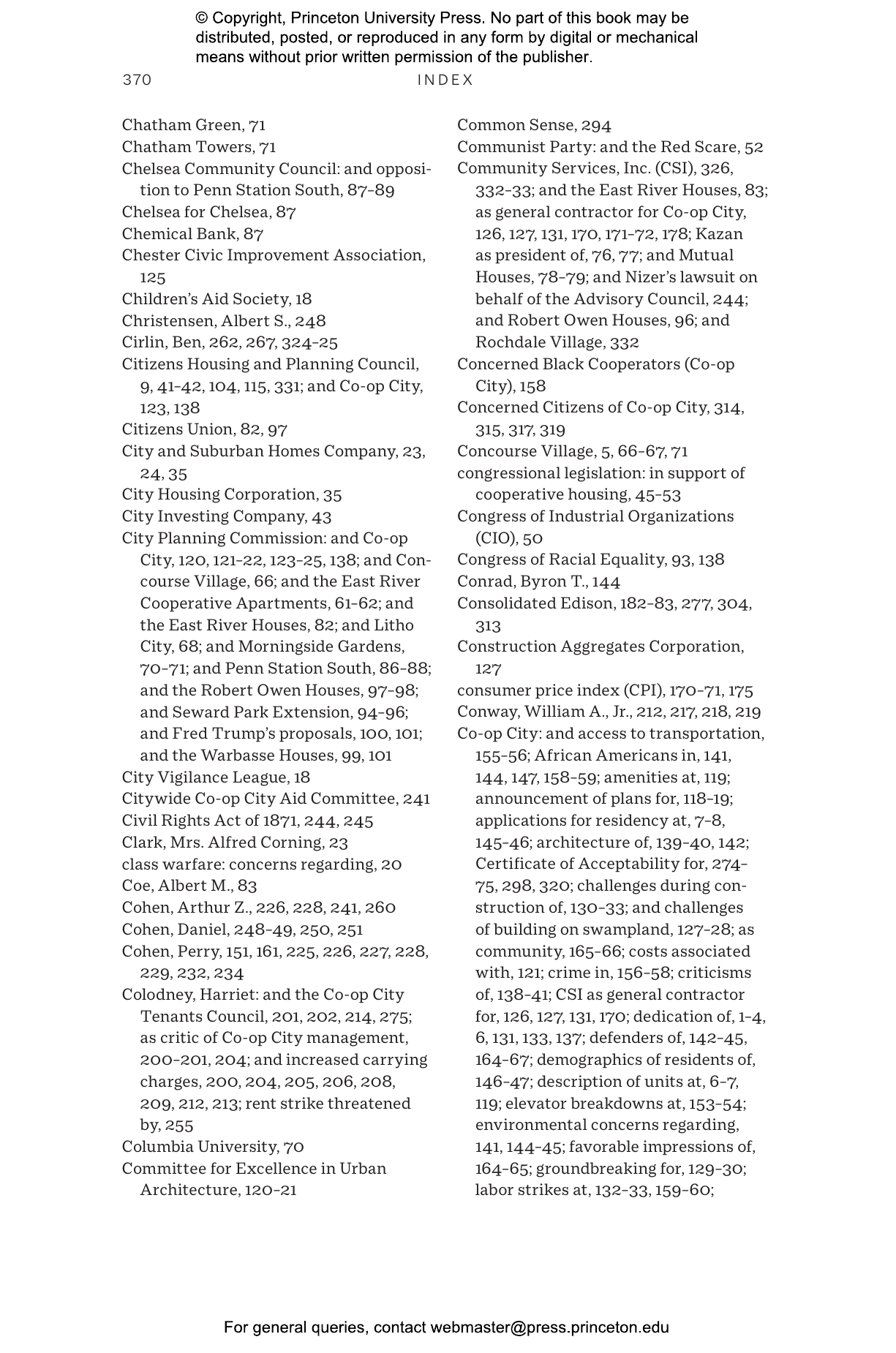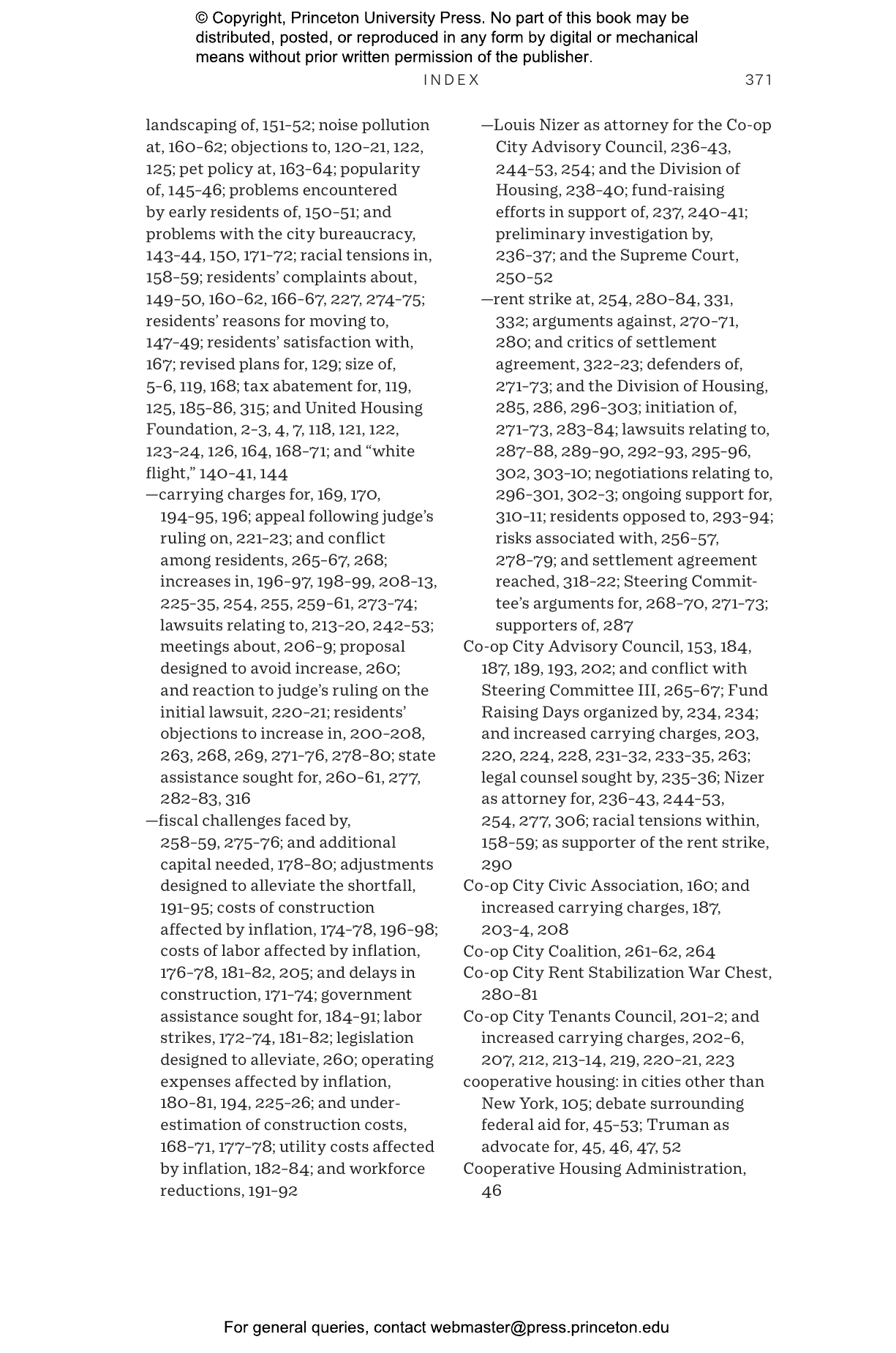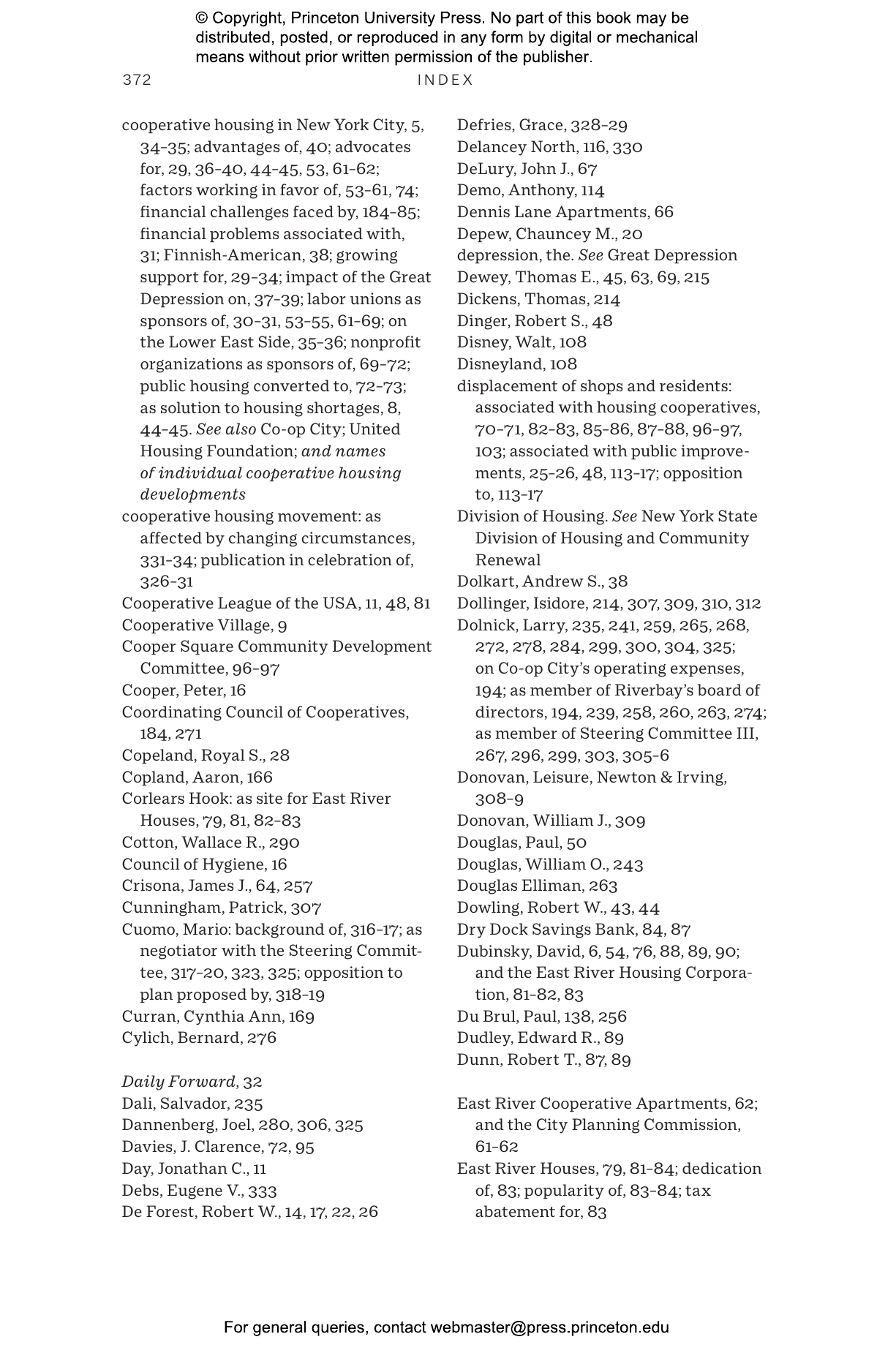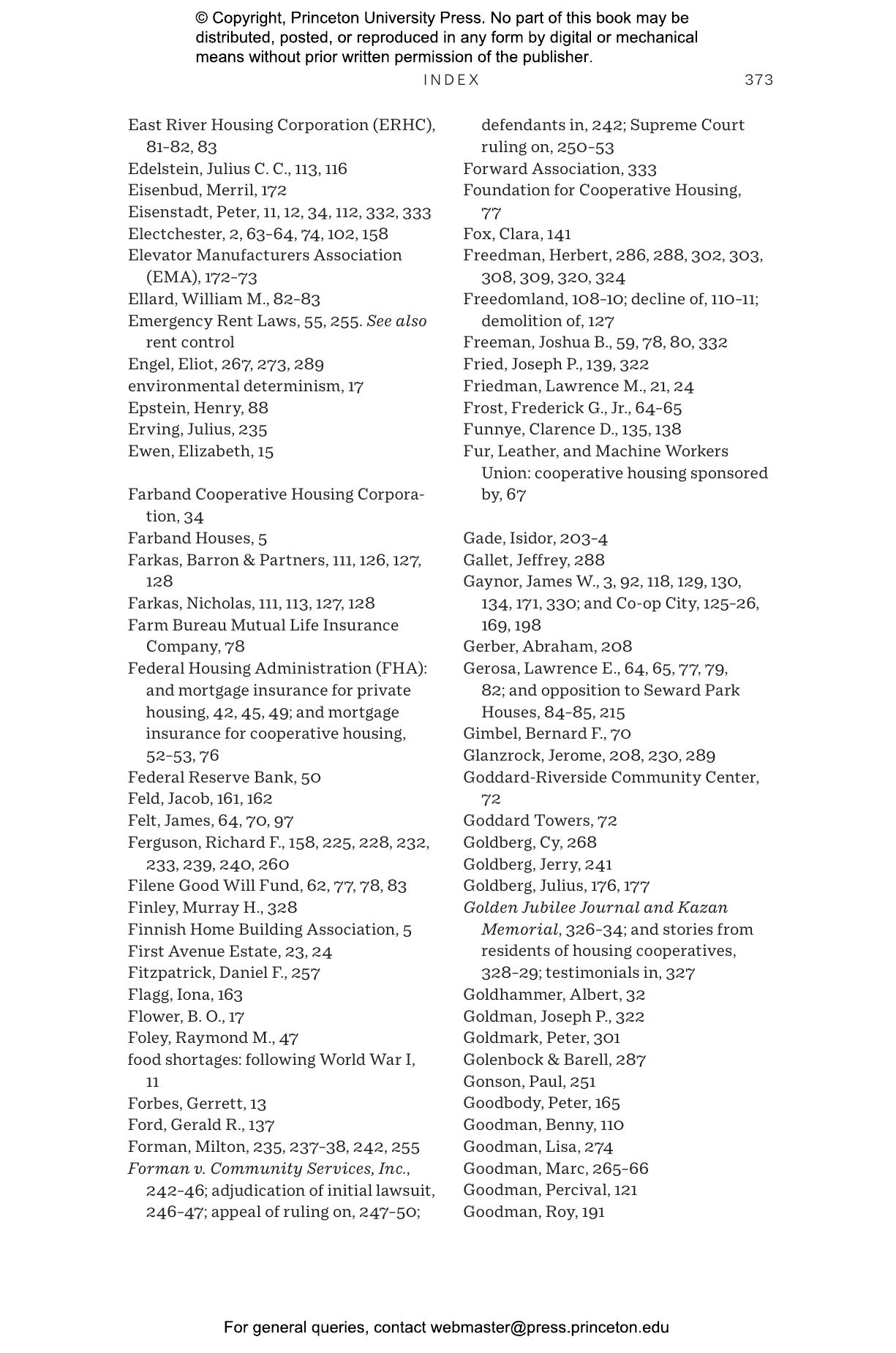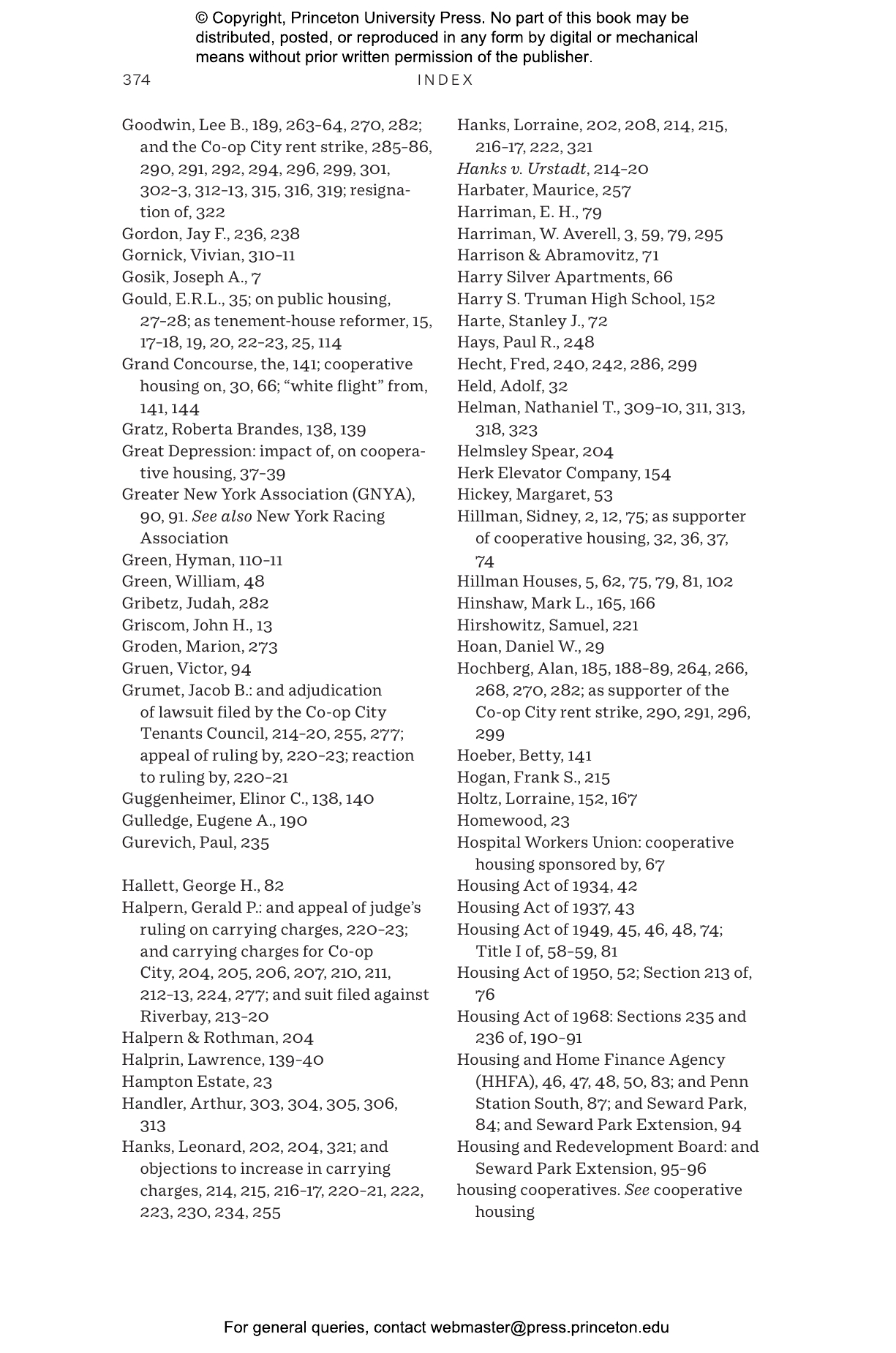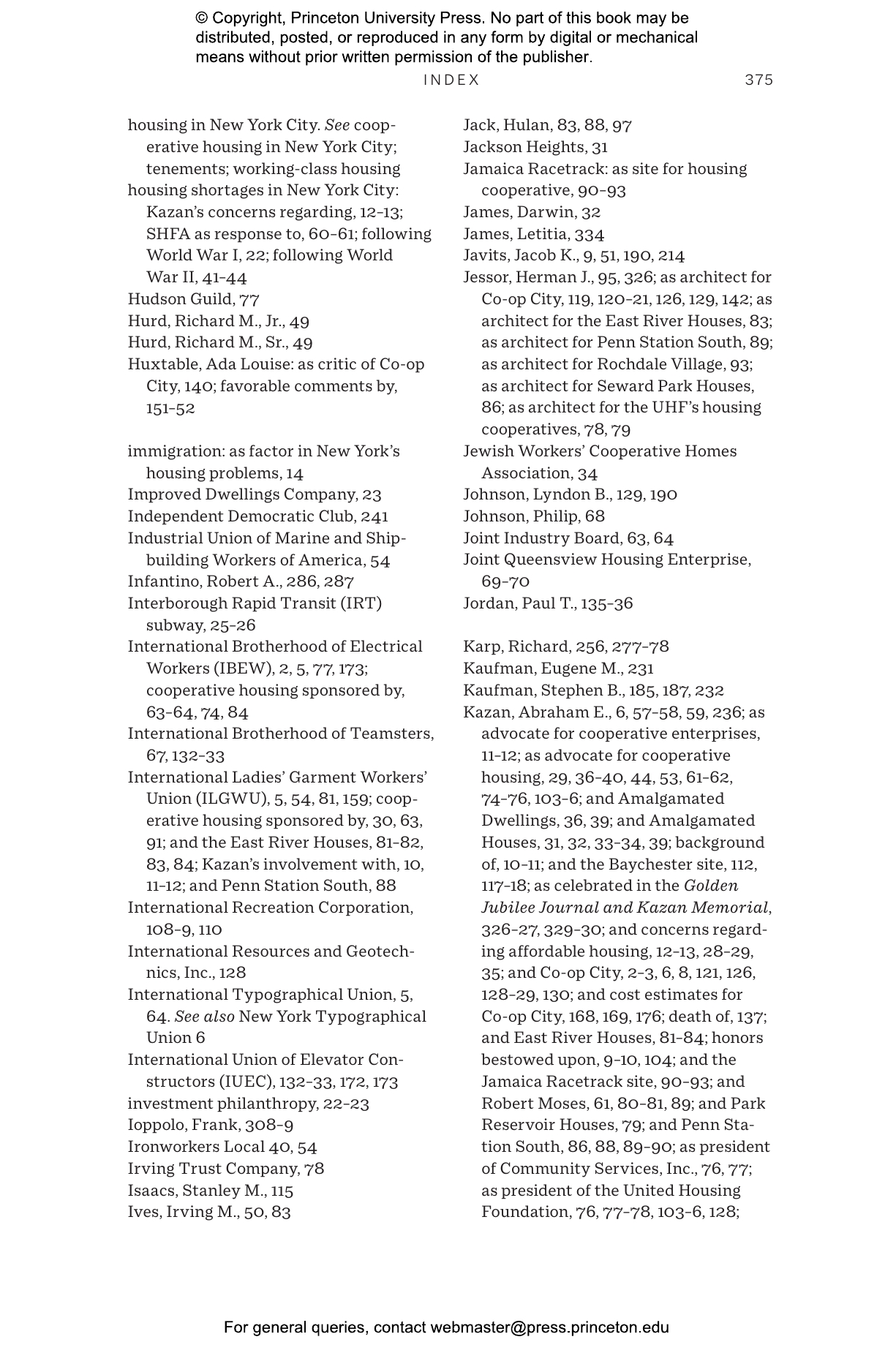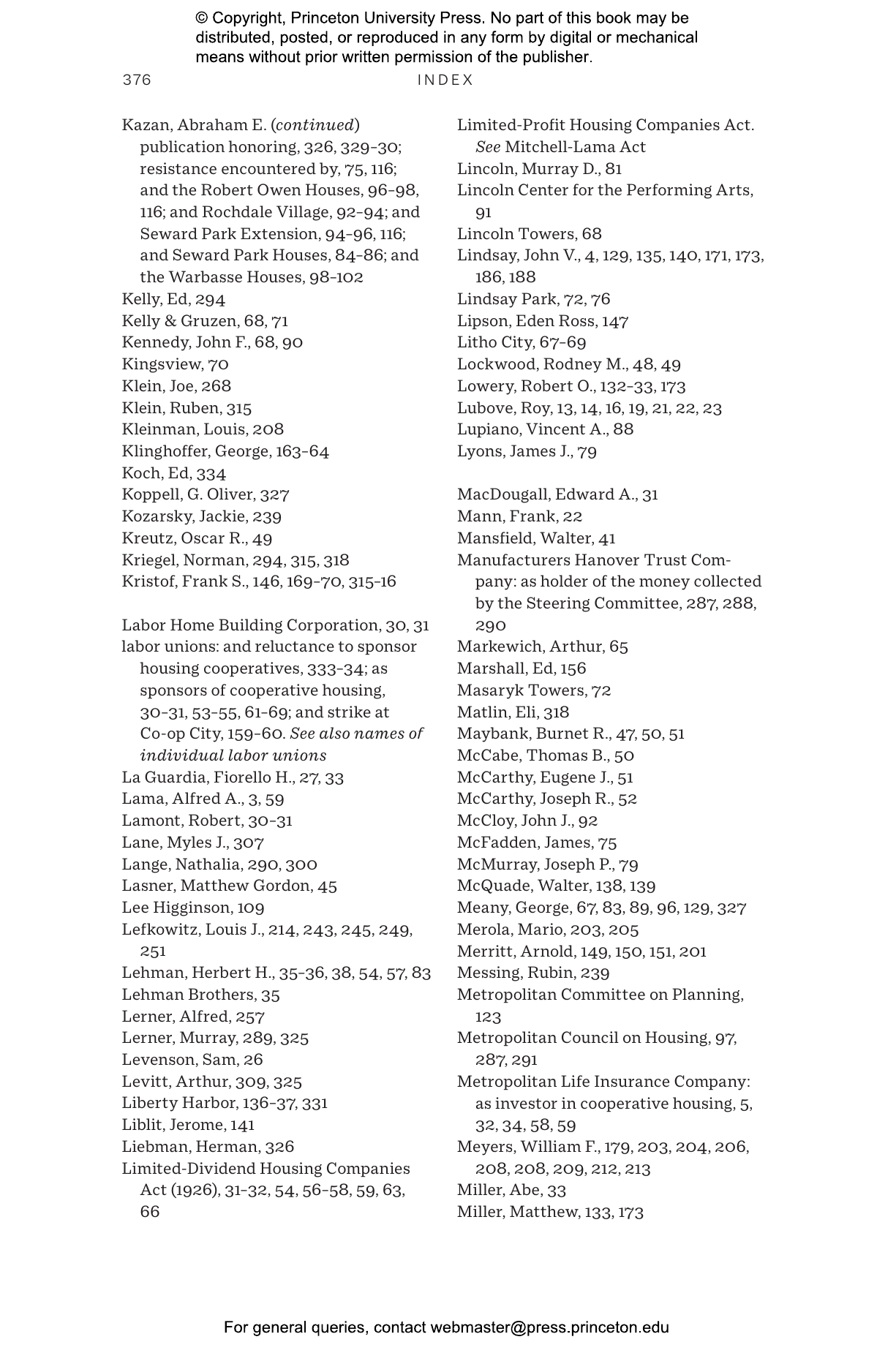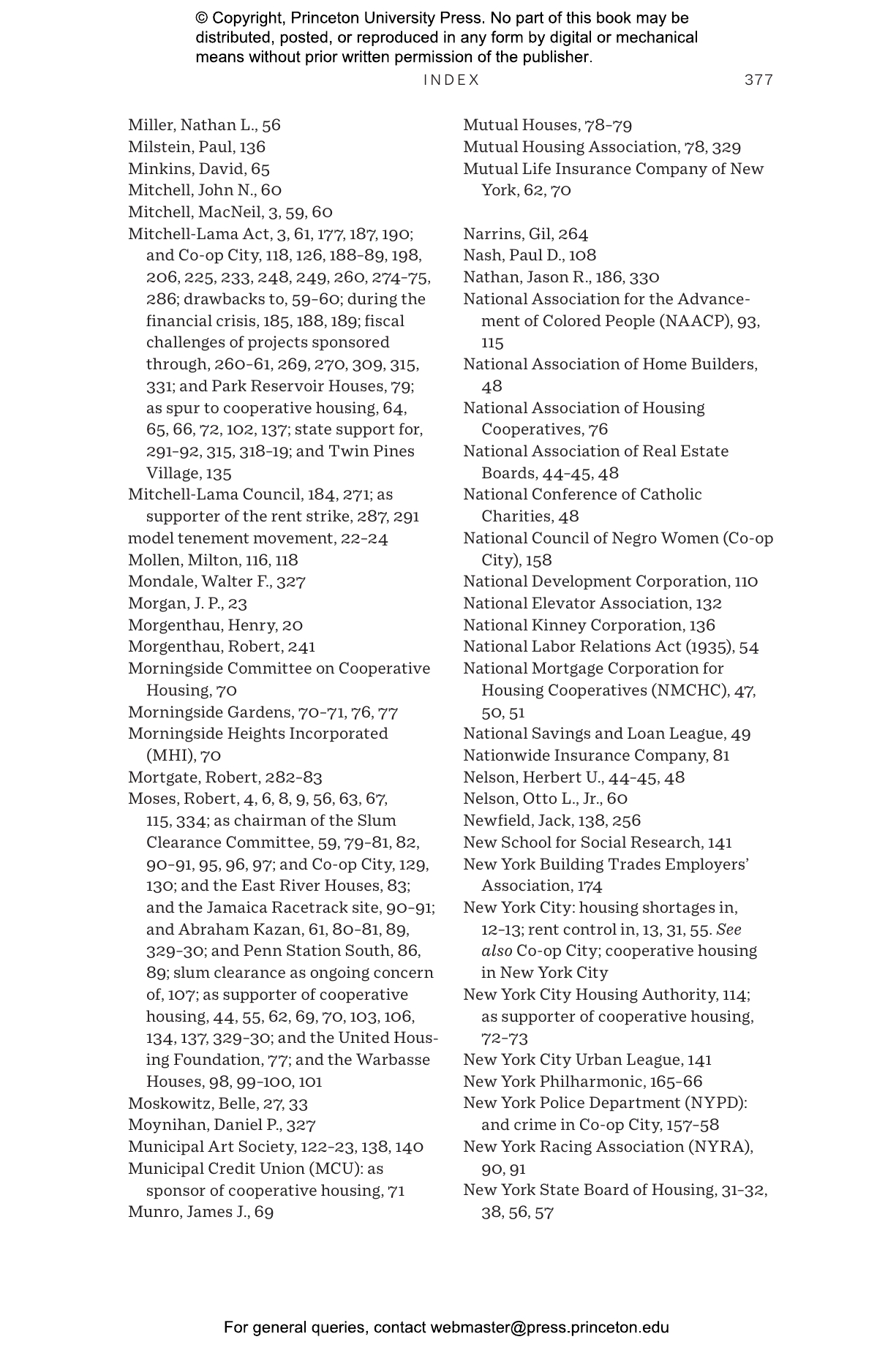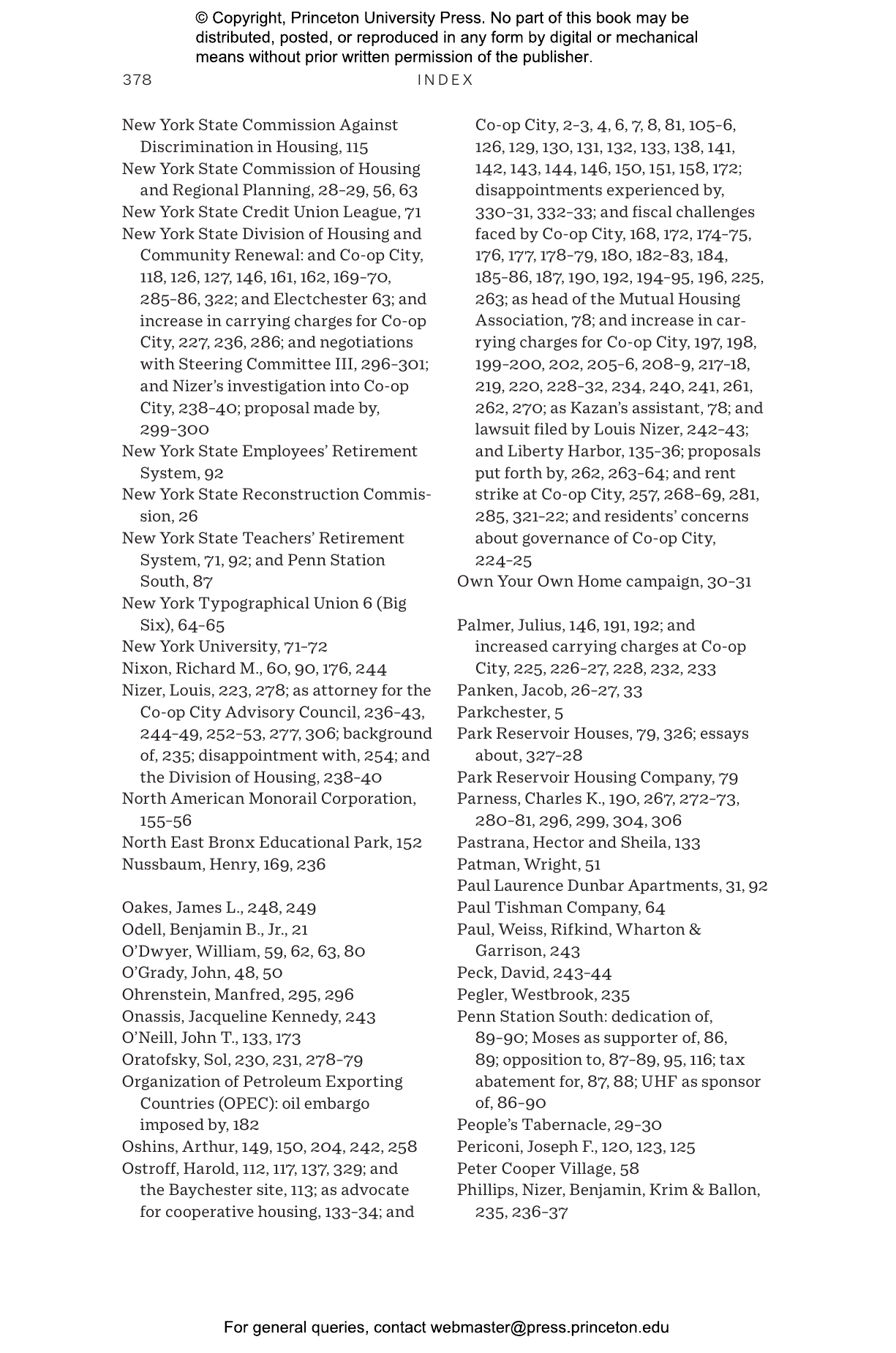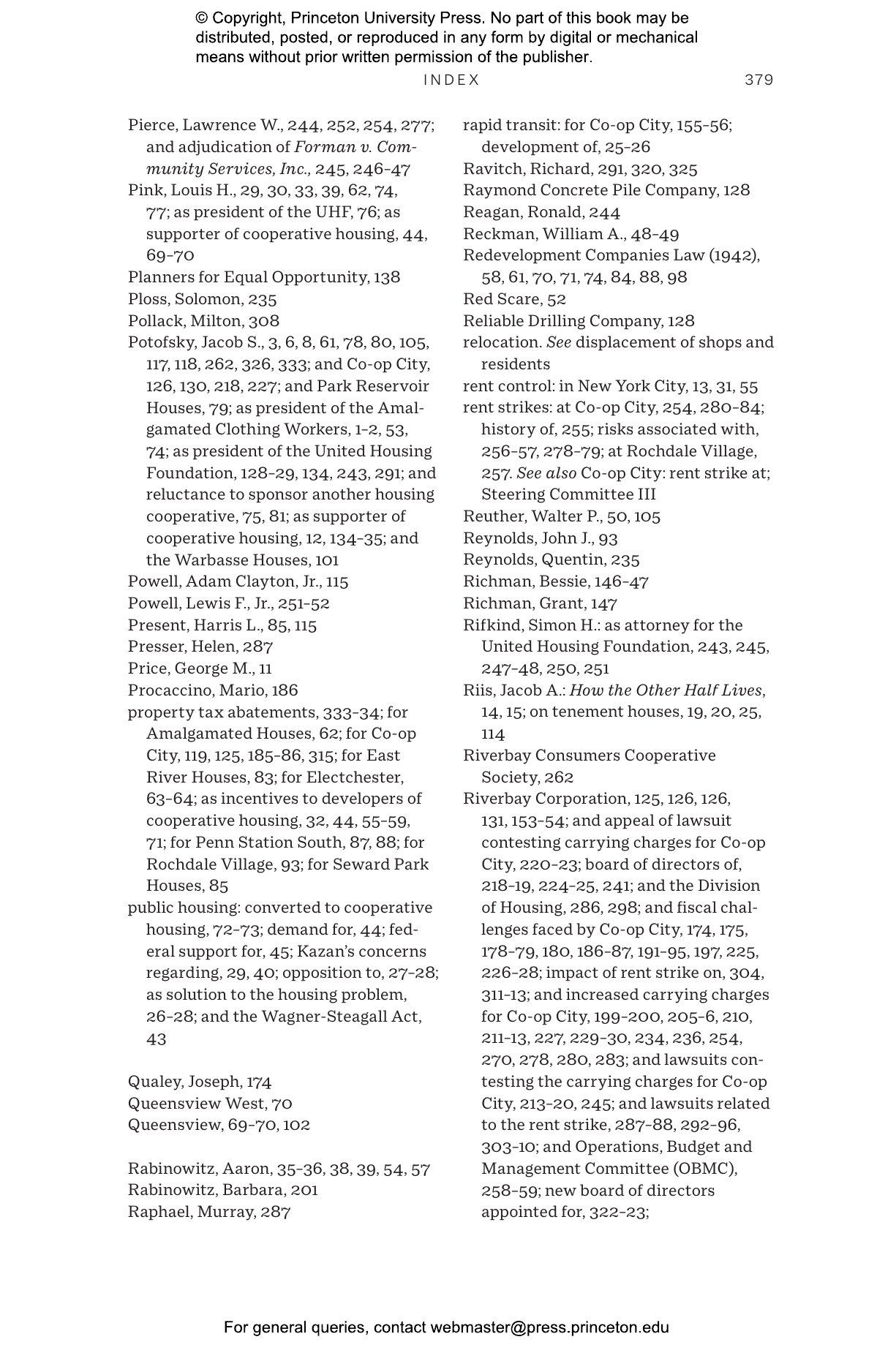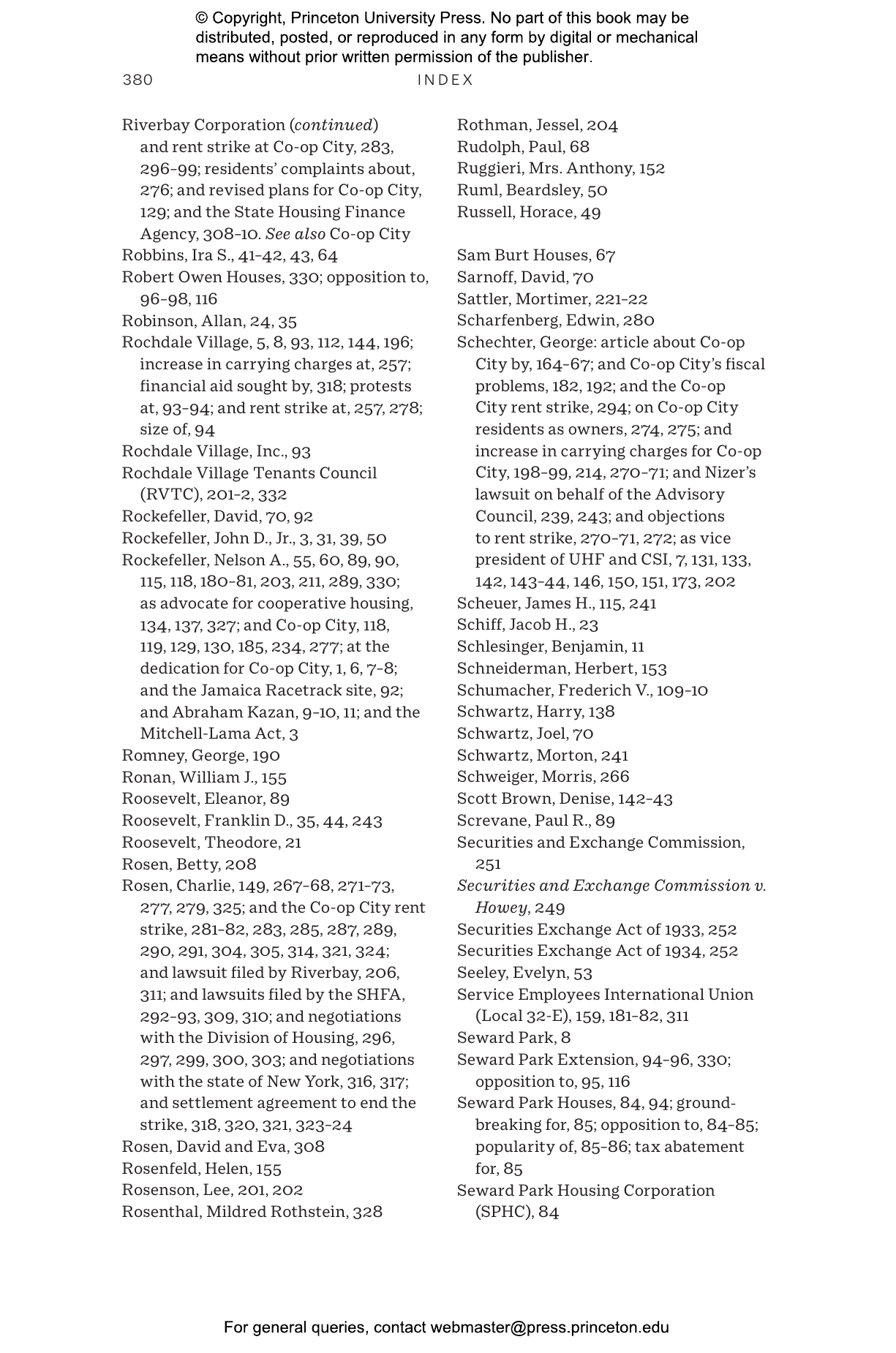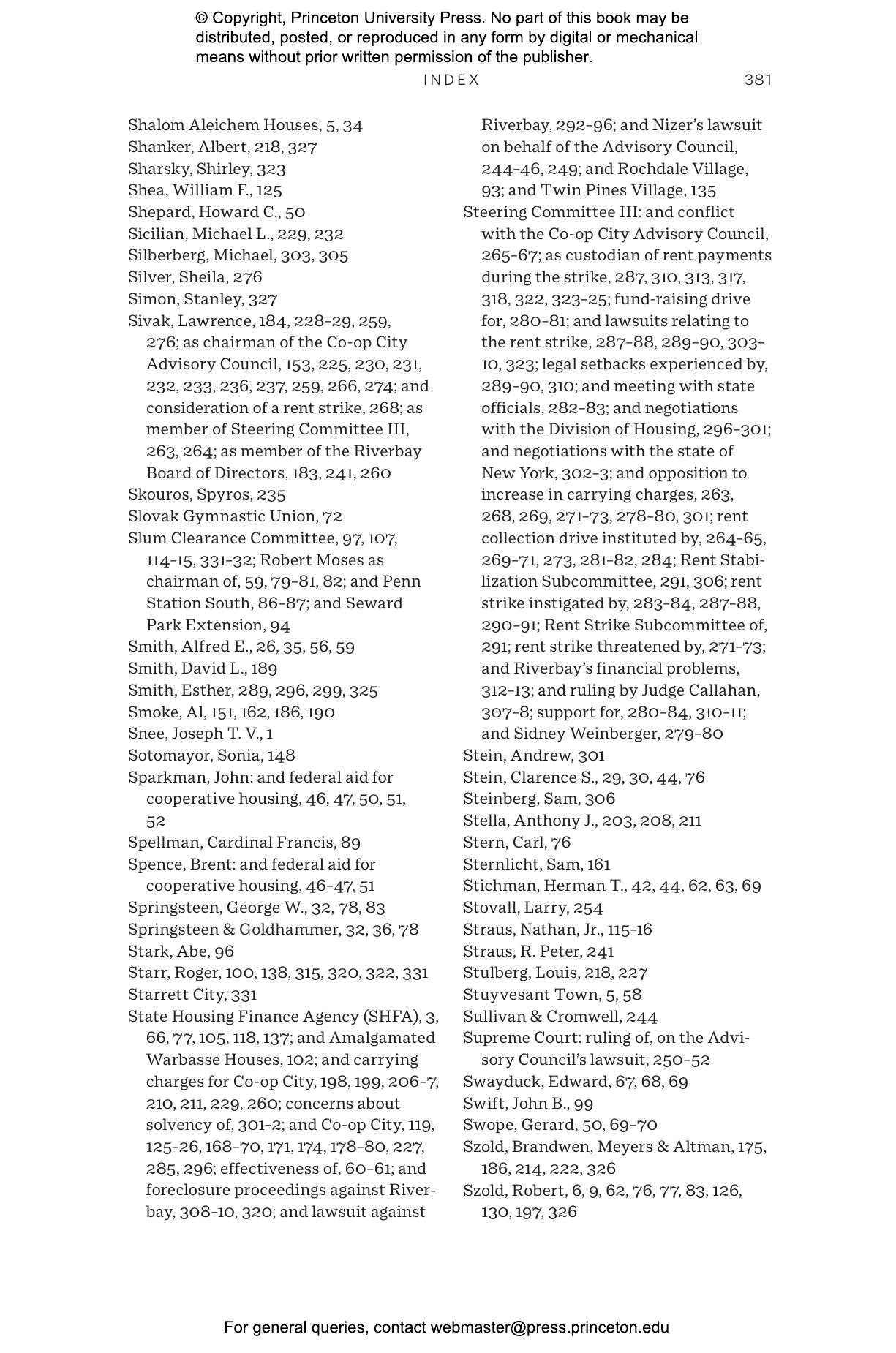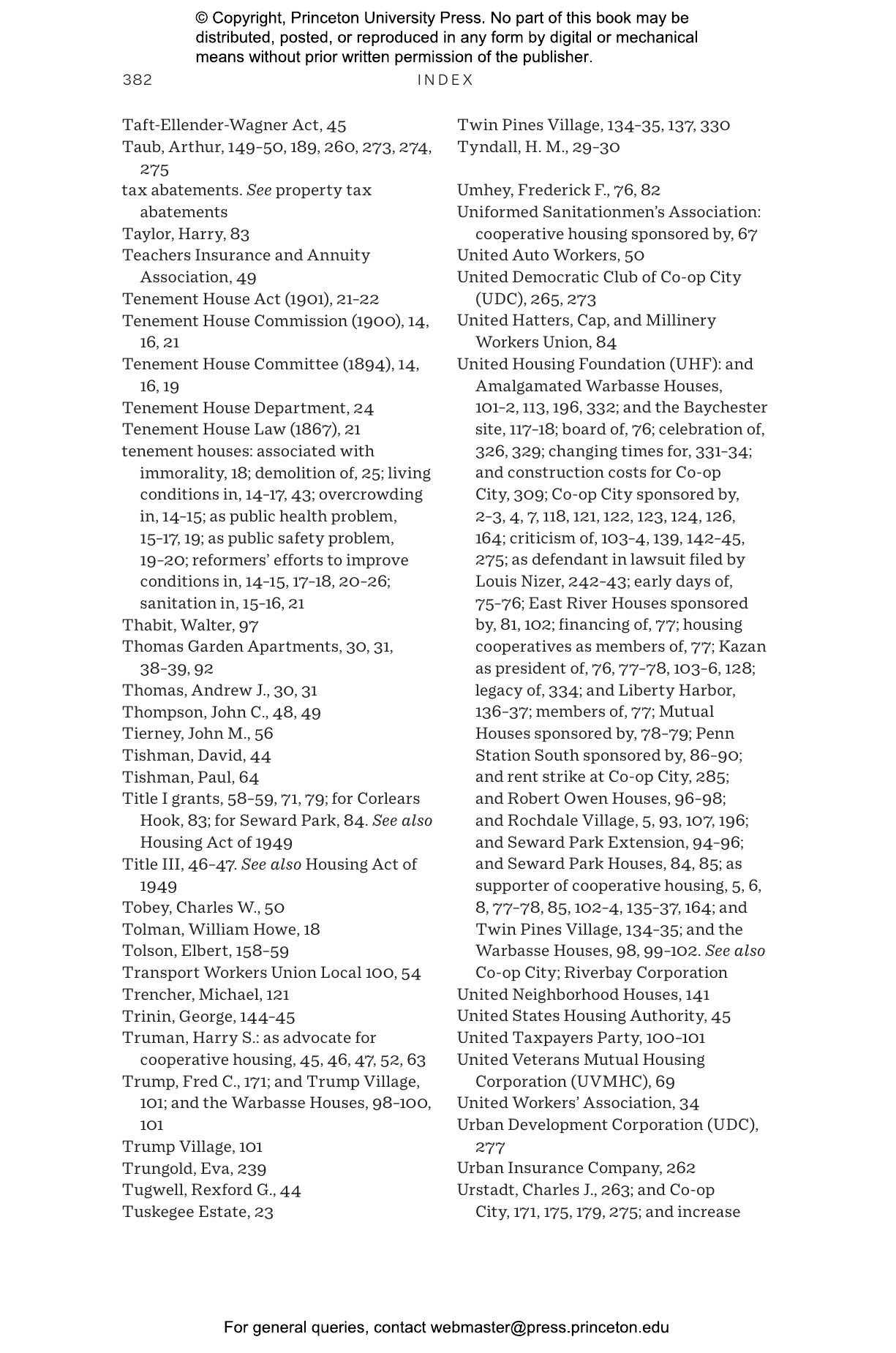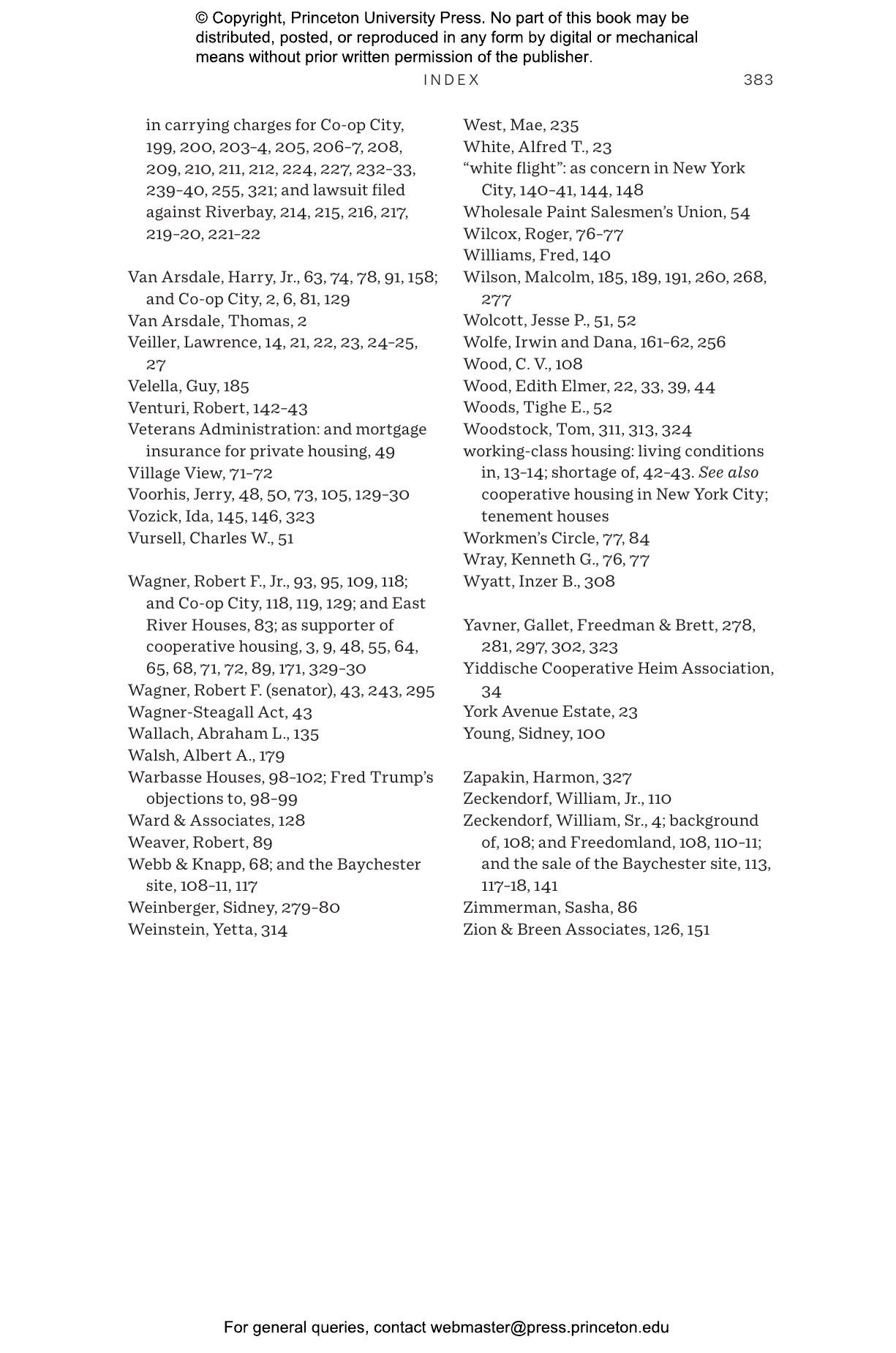Working-Class Utopias: A History of Cooperative Housing in New York City
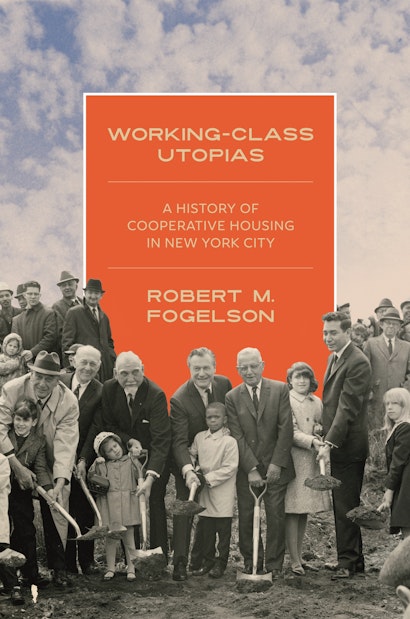

Hardcover
- Price:
- $39.95/£35.00
- ISBN:
- Published (US):
- Oct 18, 2022
- Published (UK):
- Dec 13, 2022
- Copyright:
- 2022
- Pages:
- 408
- Size:
- 6.13 x 9.25 in.
- 26 b/w illus.
- Main_subject:
- History
ebook
As World War II ended and Americans turned their attention to problems at home, union leaders and other prominent New Yorkers came to believe that cooperative housing would solve the city’s century-old problem of providing decent housing at a reasonable cost for working-class families. Working-Class Utopias tells the story of this ambitious movement from the construction of the Amalgamated Houses after World War I to the building of Co-op City, the world’s largest housing cooperative, four decades later.
Robert Fogelson brings to life a tumultuous era in the life of New York, drawing on a wealth of archival materials such as community newspapers, legal records, and personal and institutional papers. In the early 1950s, a consortium of labor unions founded the United Housing Foundation under the visionary leadership of Abraham E. Kazan, who was supported by Nelson A. Rockefeller, Robert F. Wagner Jr., and Robert Moses. With the help of the state, which provided below-market-rate mortgages, and the city, which granted tax abatements, Kazan’s group built large-scale cooperatives in every borough except Staten Island. Then came Co-op City, built in the Bronx in the 1960s as a model for other cities but plagued by unforeseen fiscal problems, culminating in the longest and costliest rent strike in American history. Co-op City survived, but the United Housing Foundation did not, and neither did the cooperative housing movement.
Working-Class Utopias is essential reading for anyone seeking to understand the housing problem that continues to plague New York and cities across the nation.
